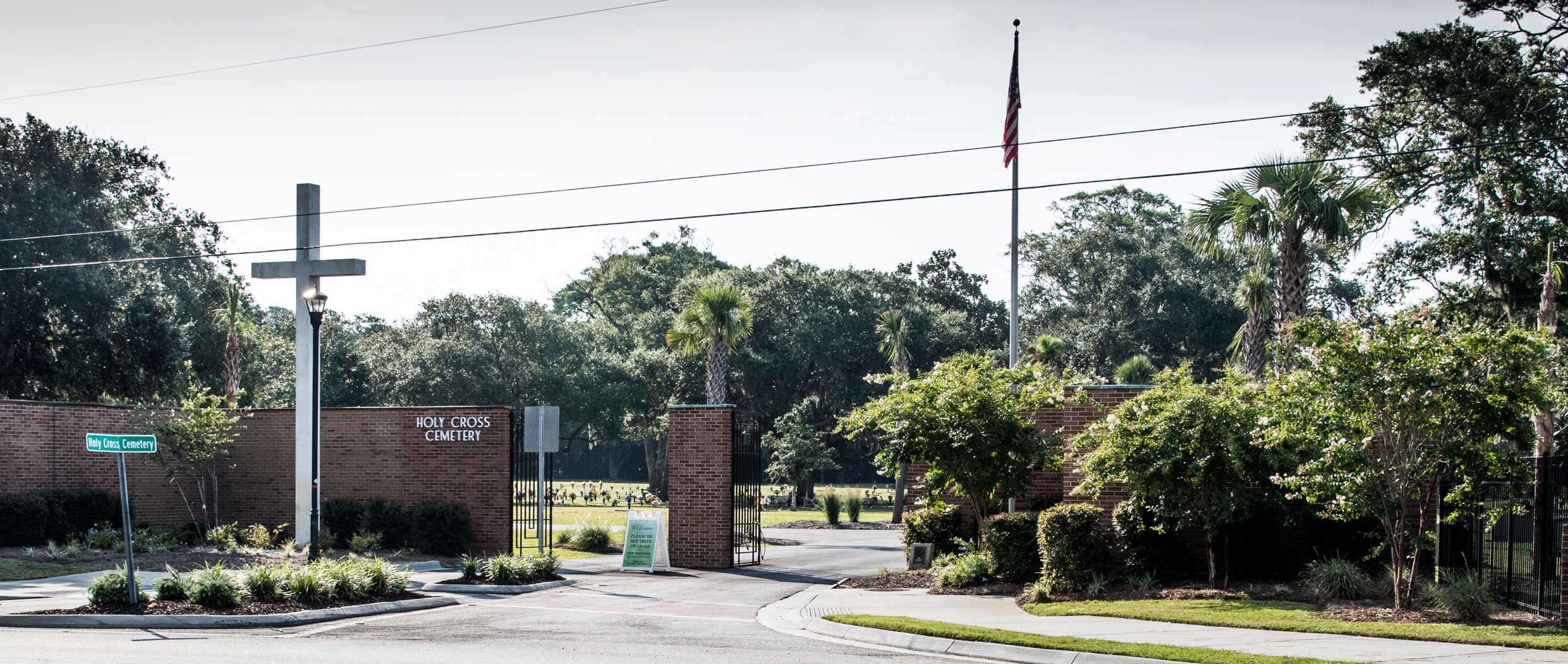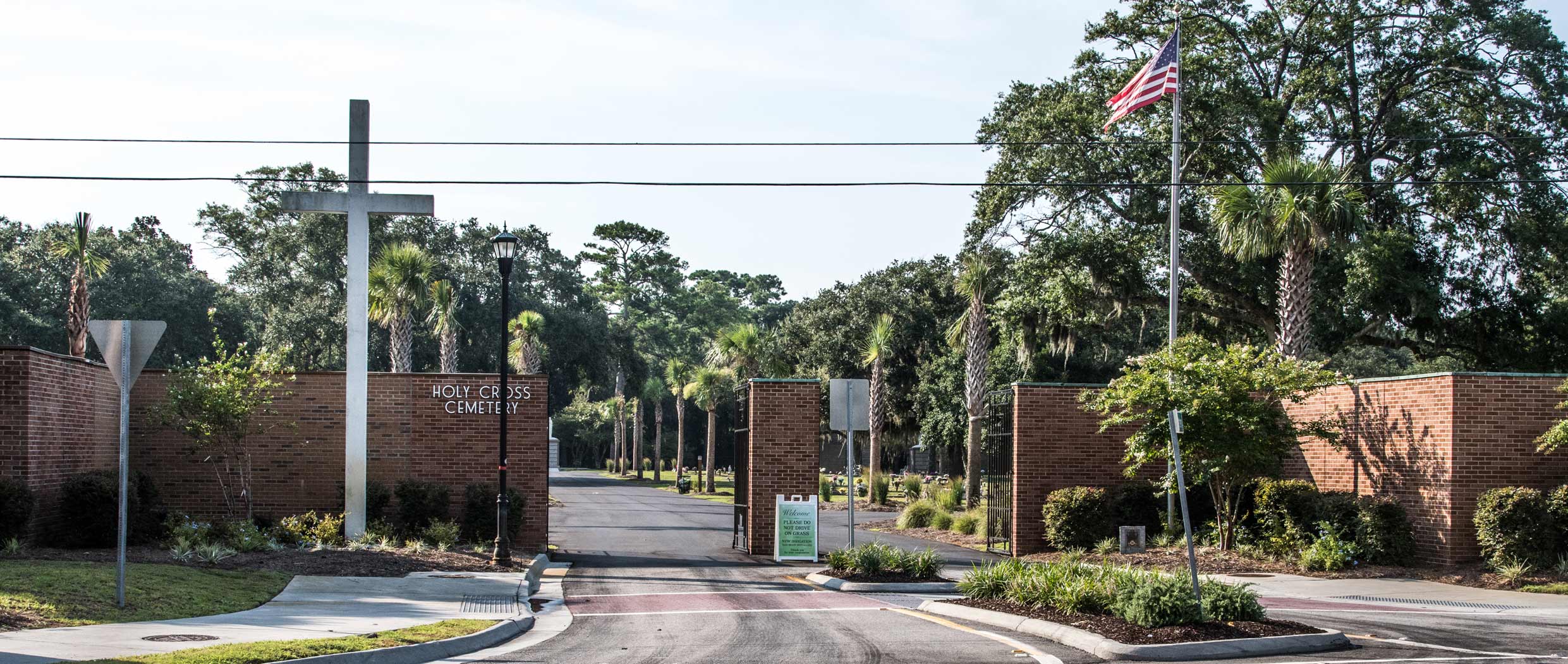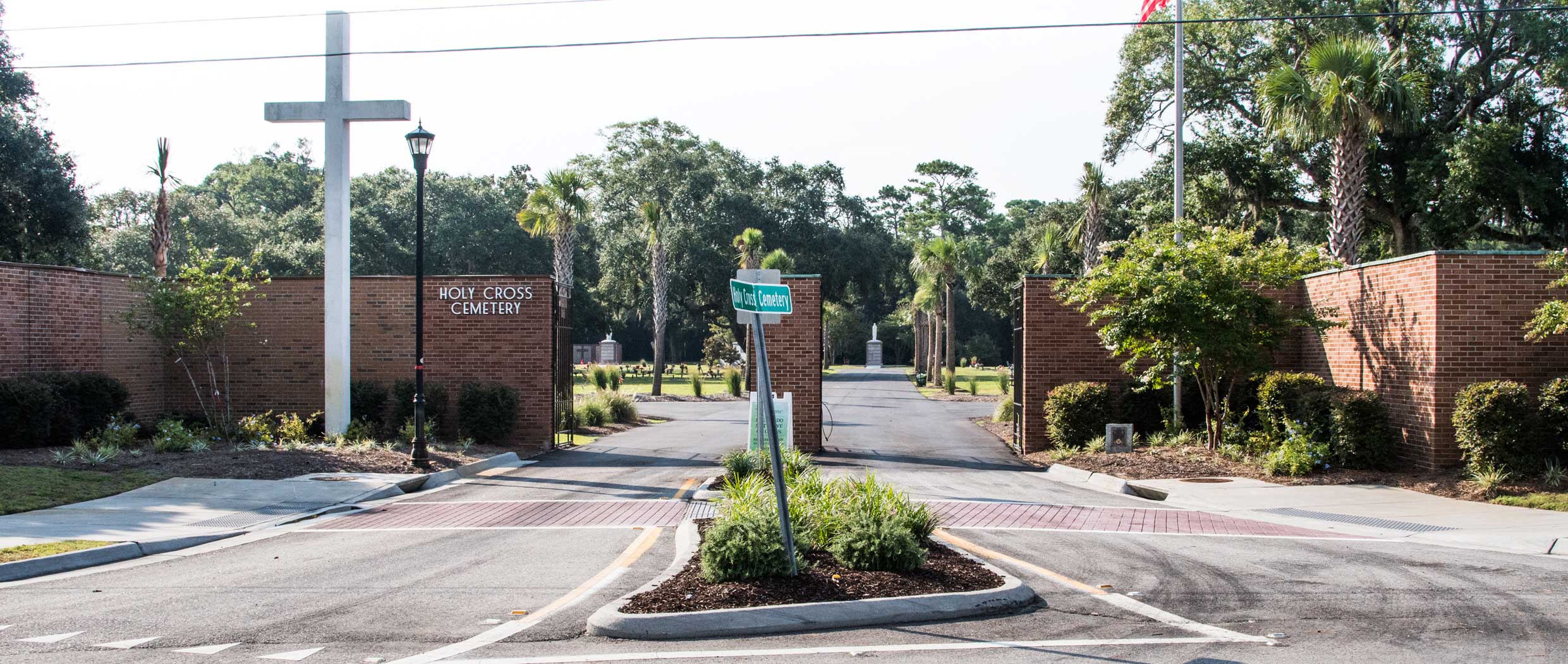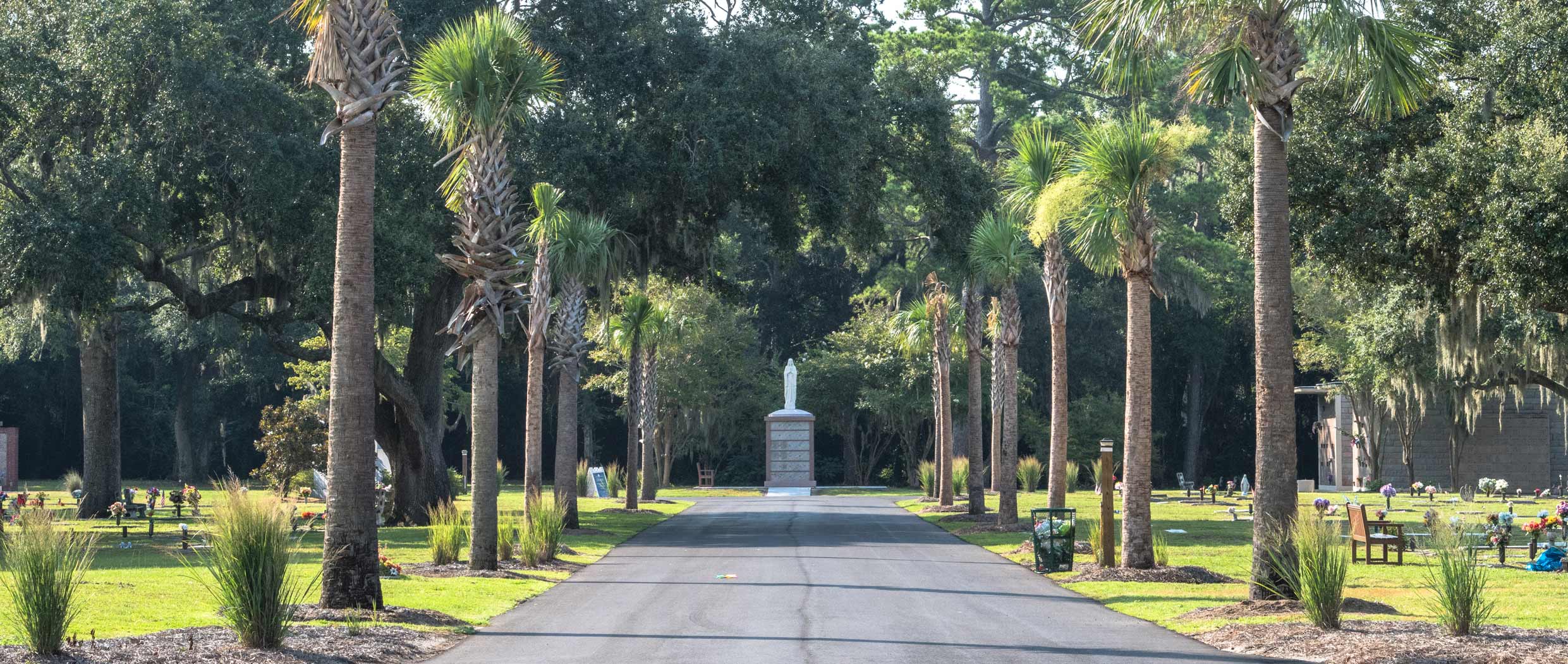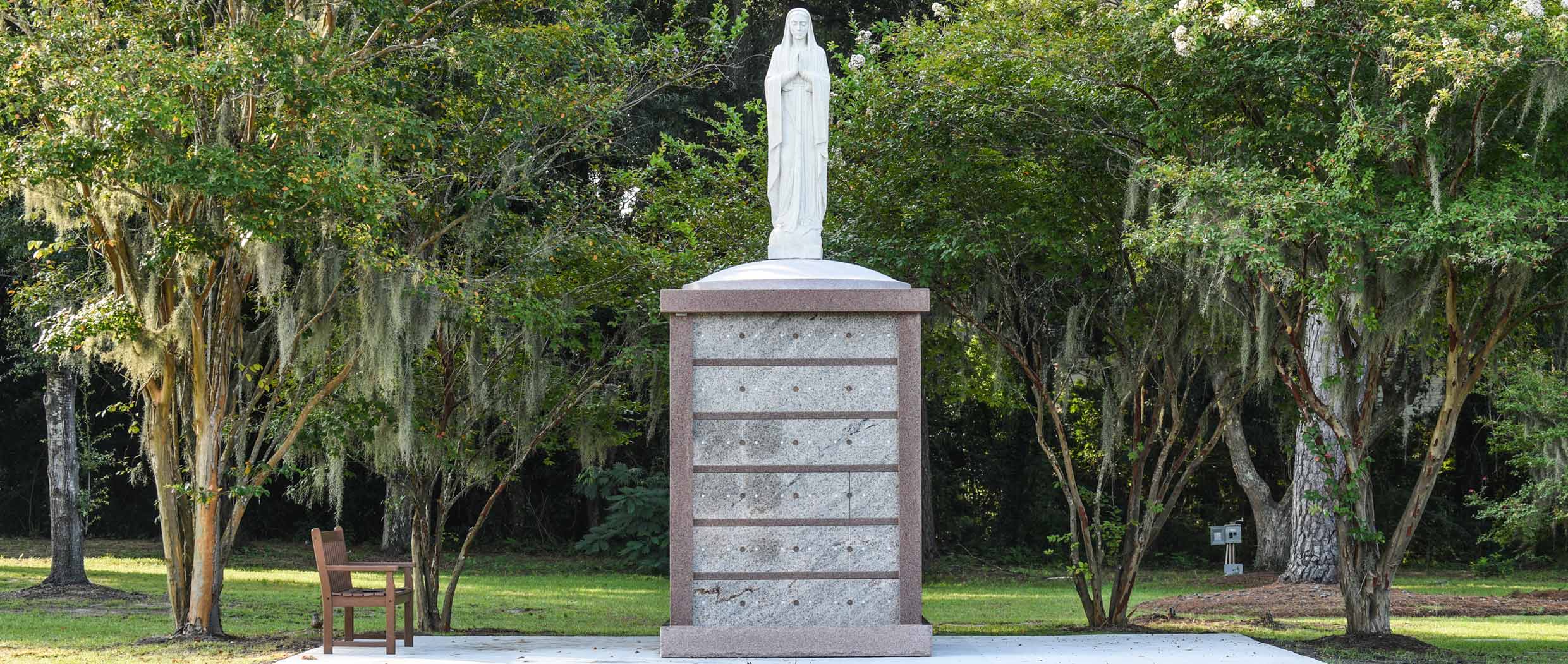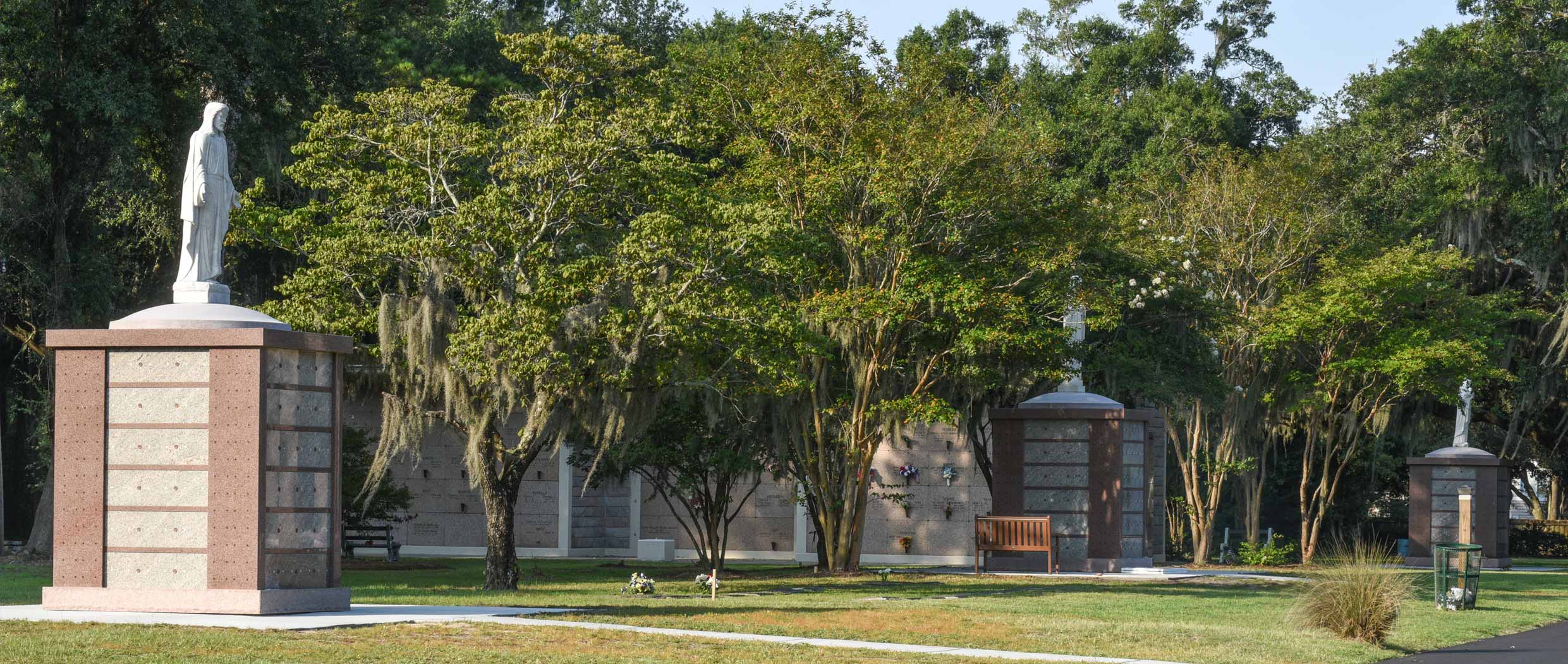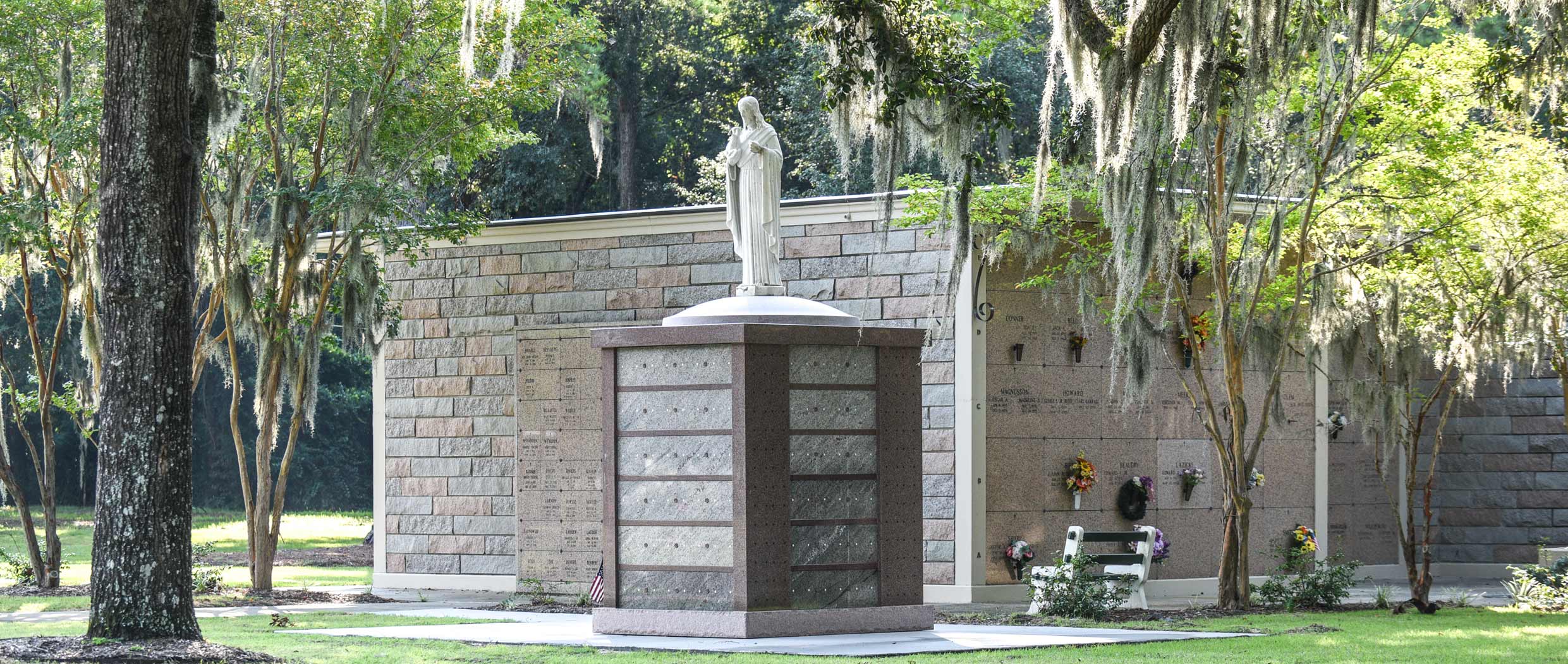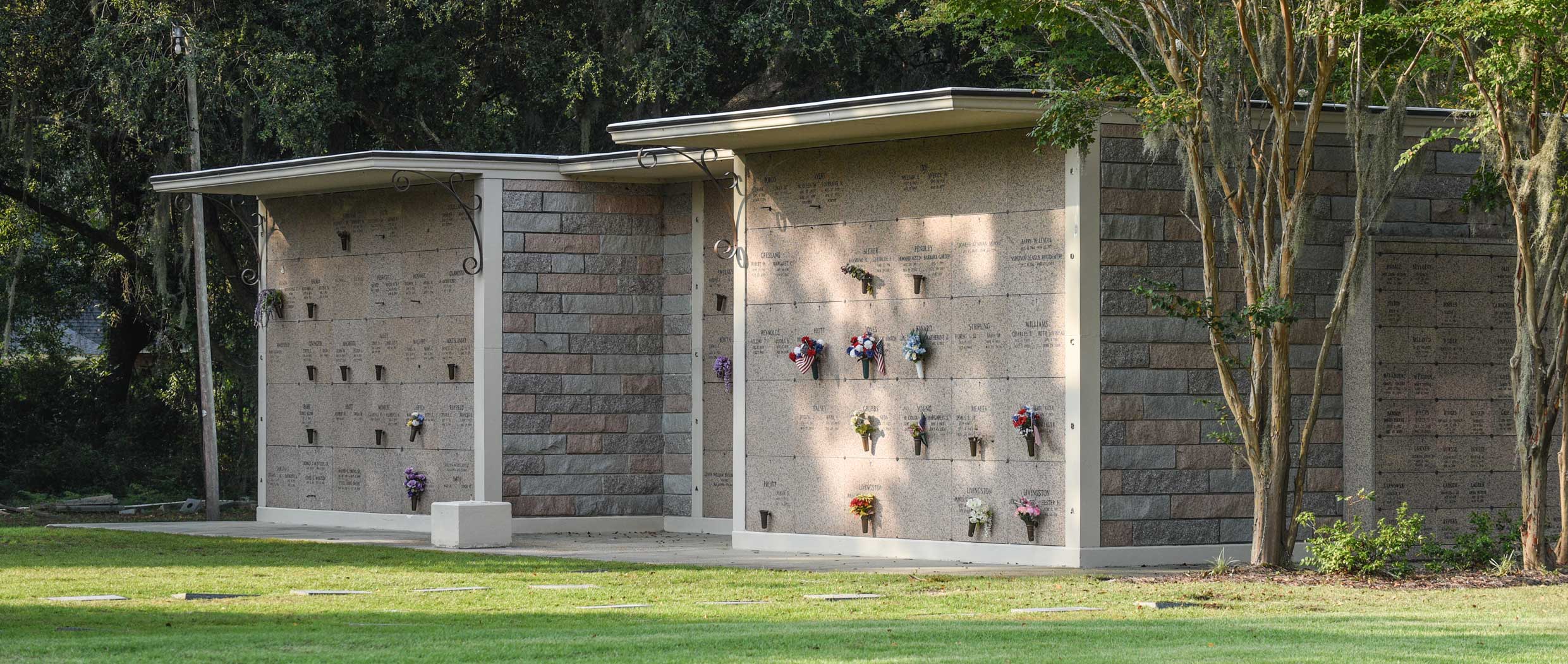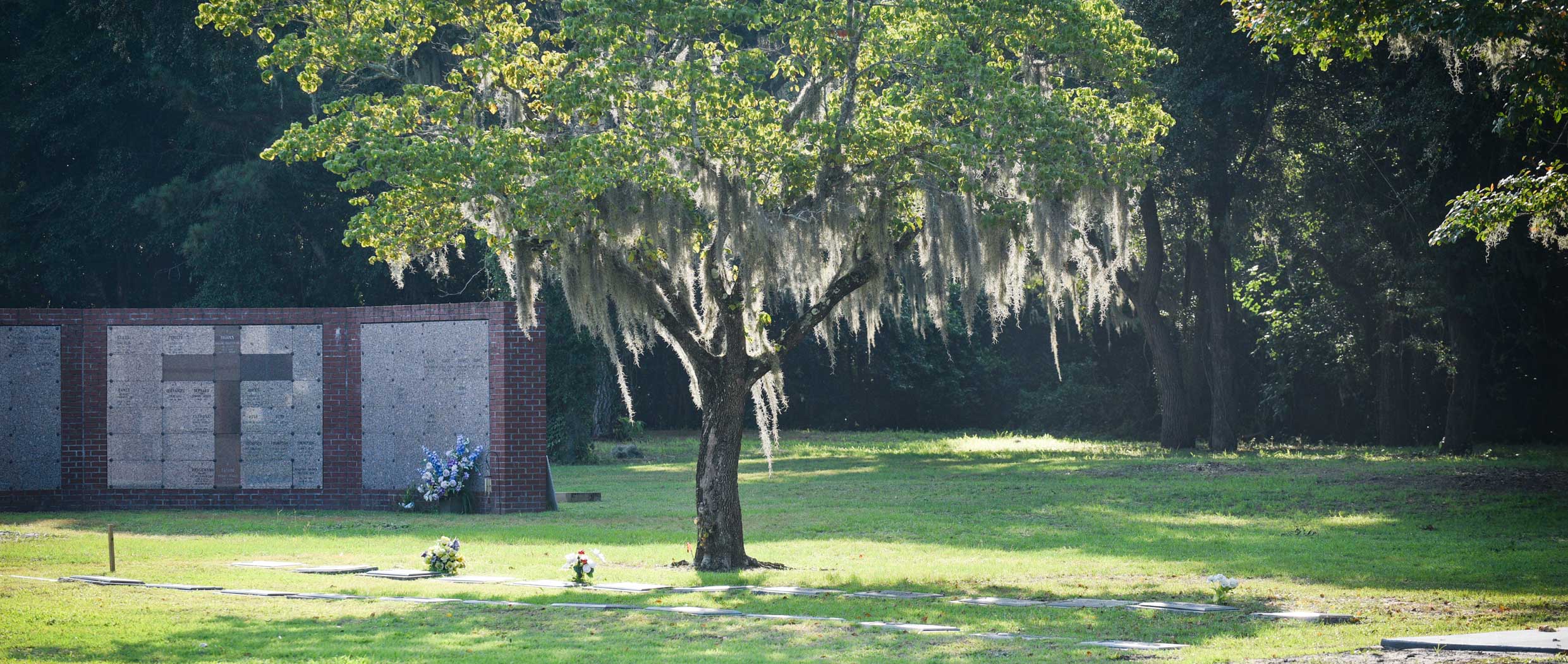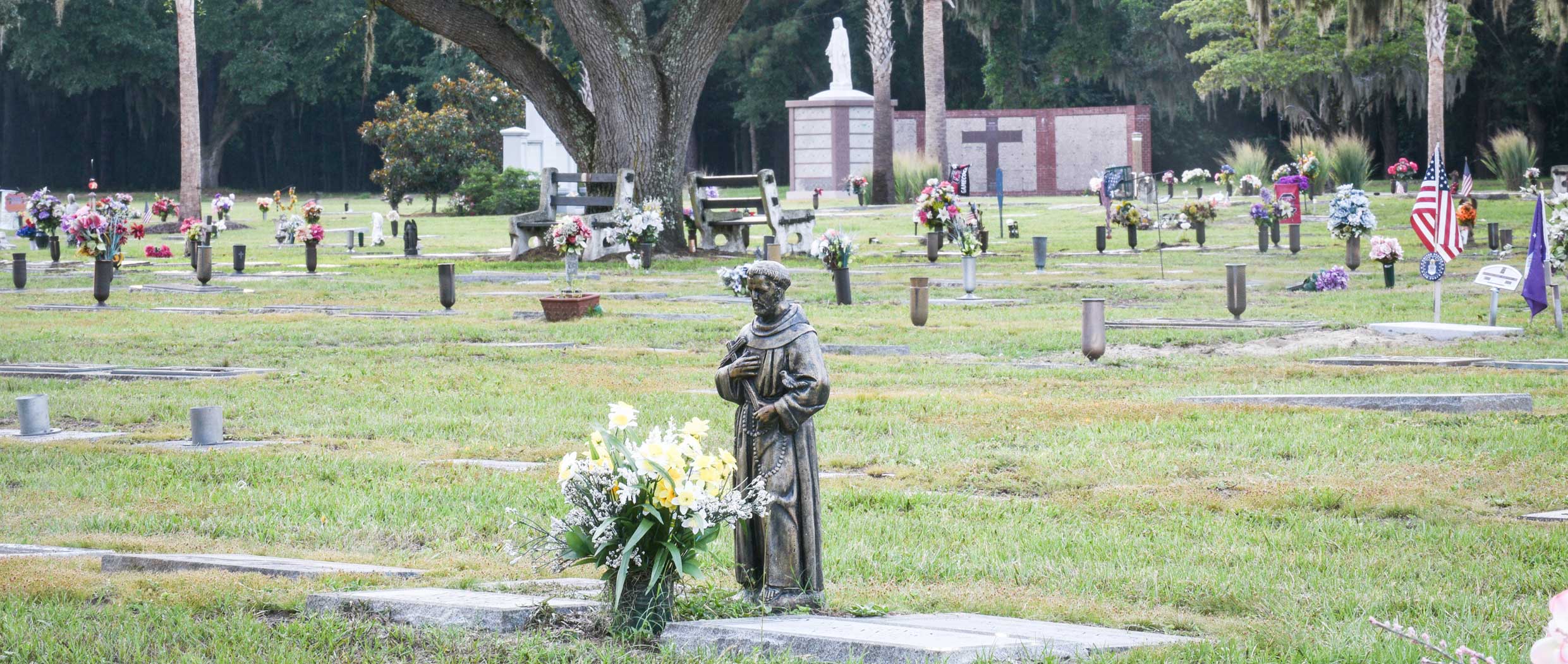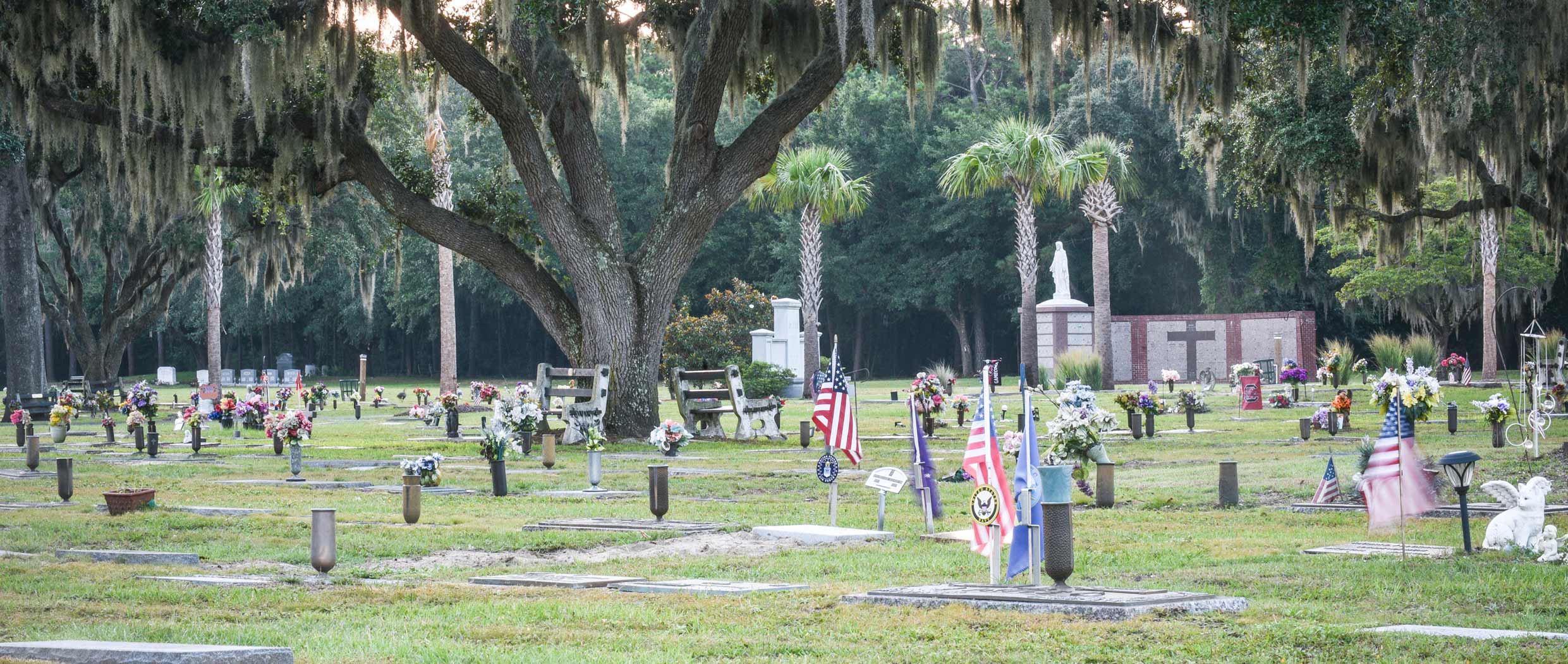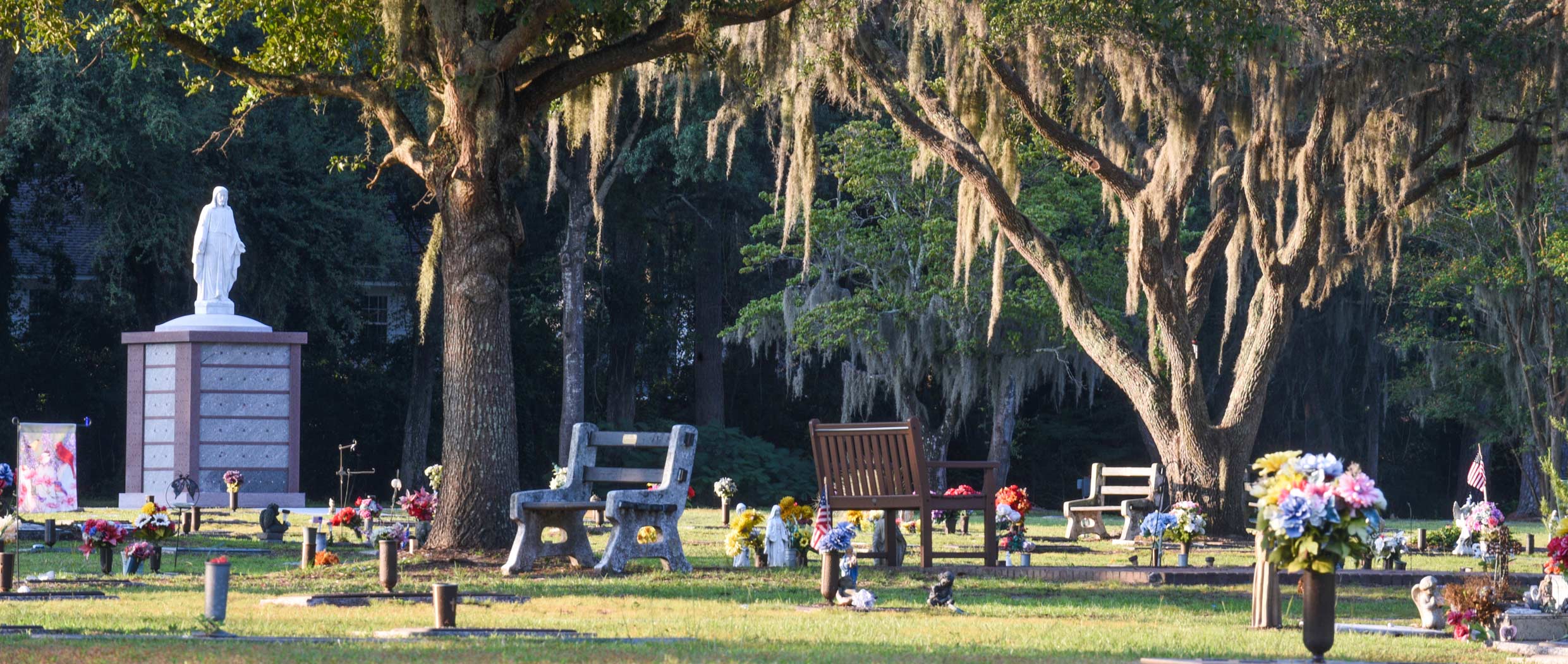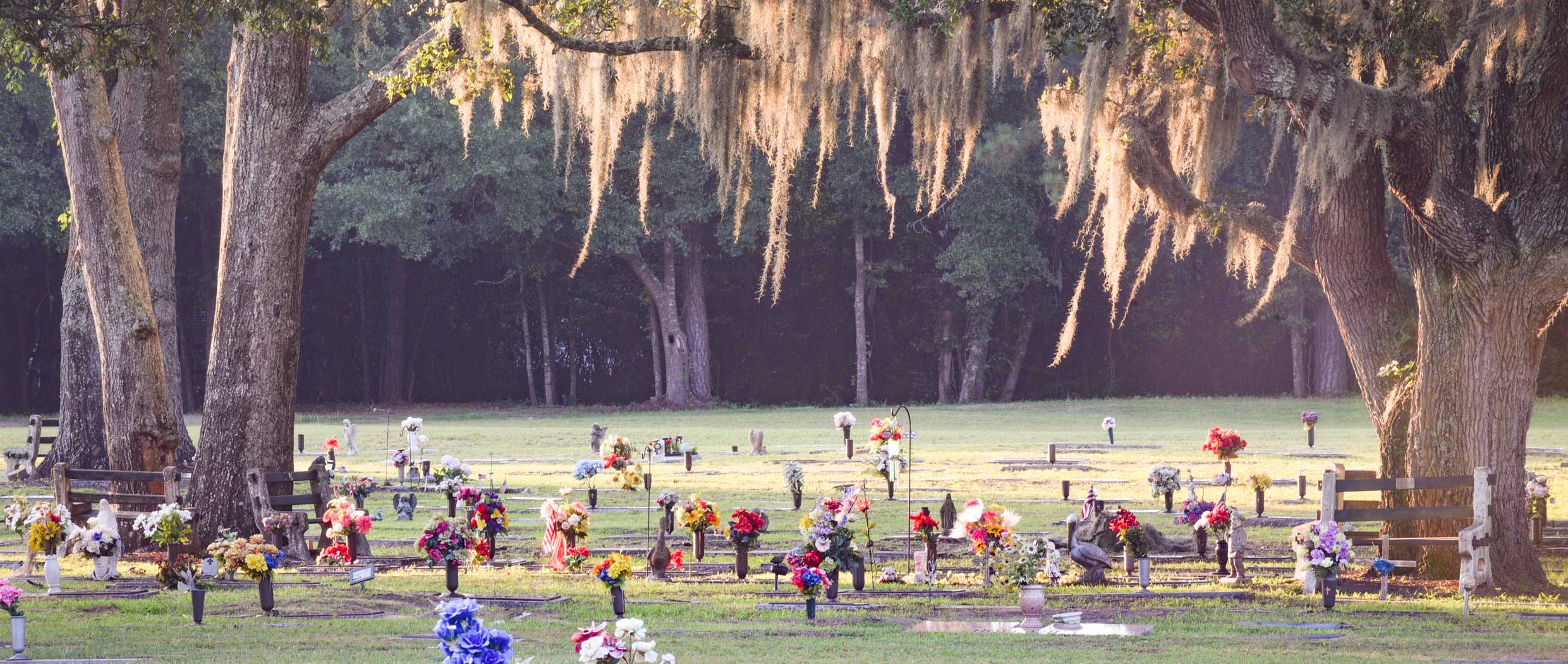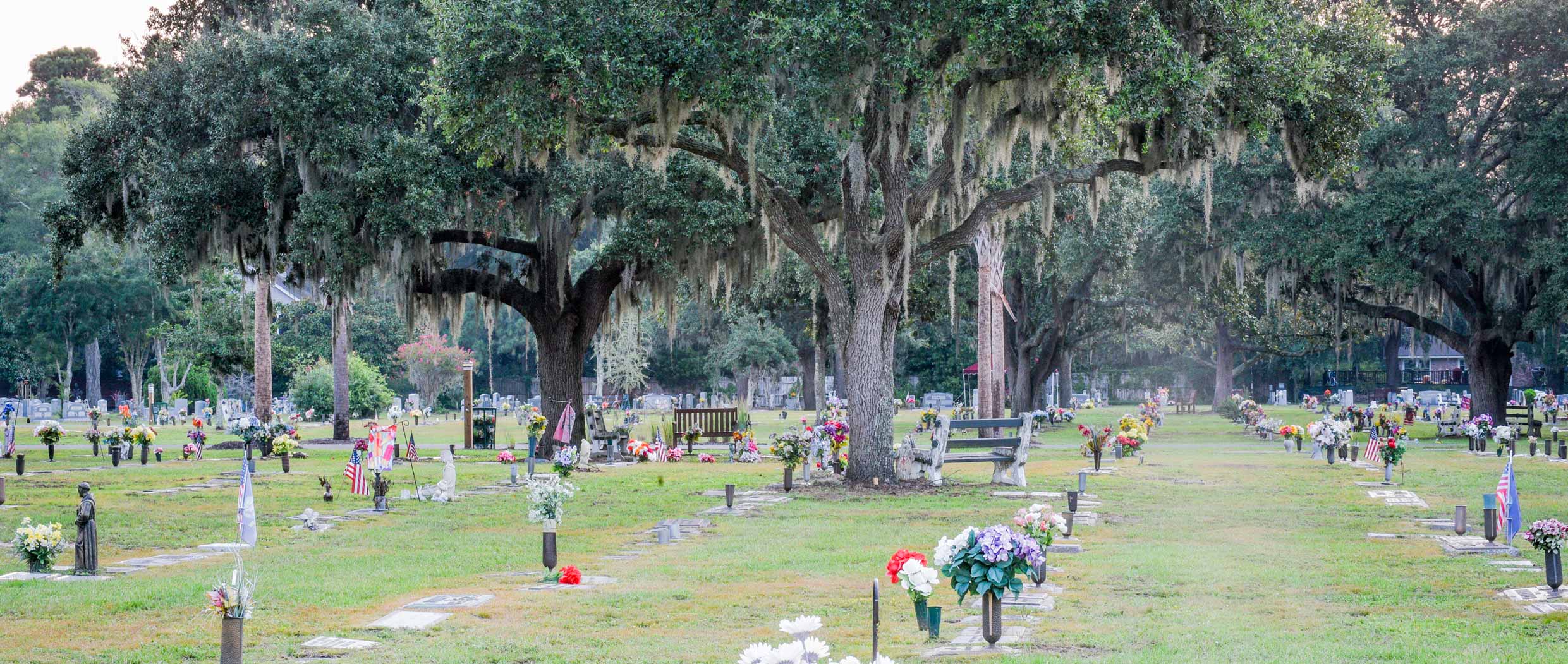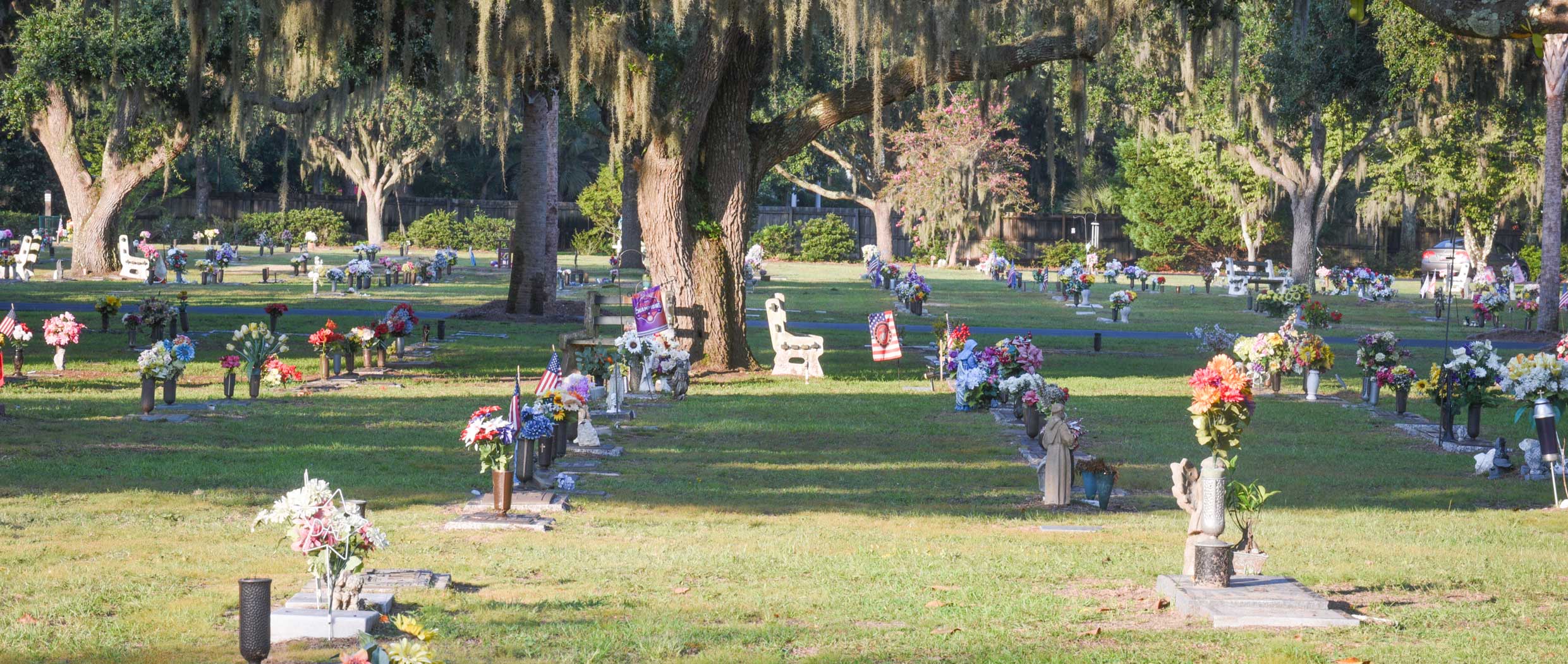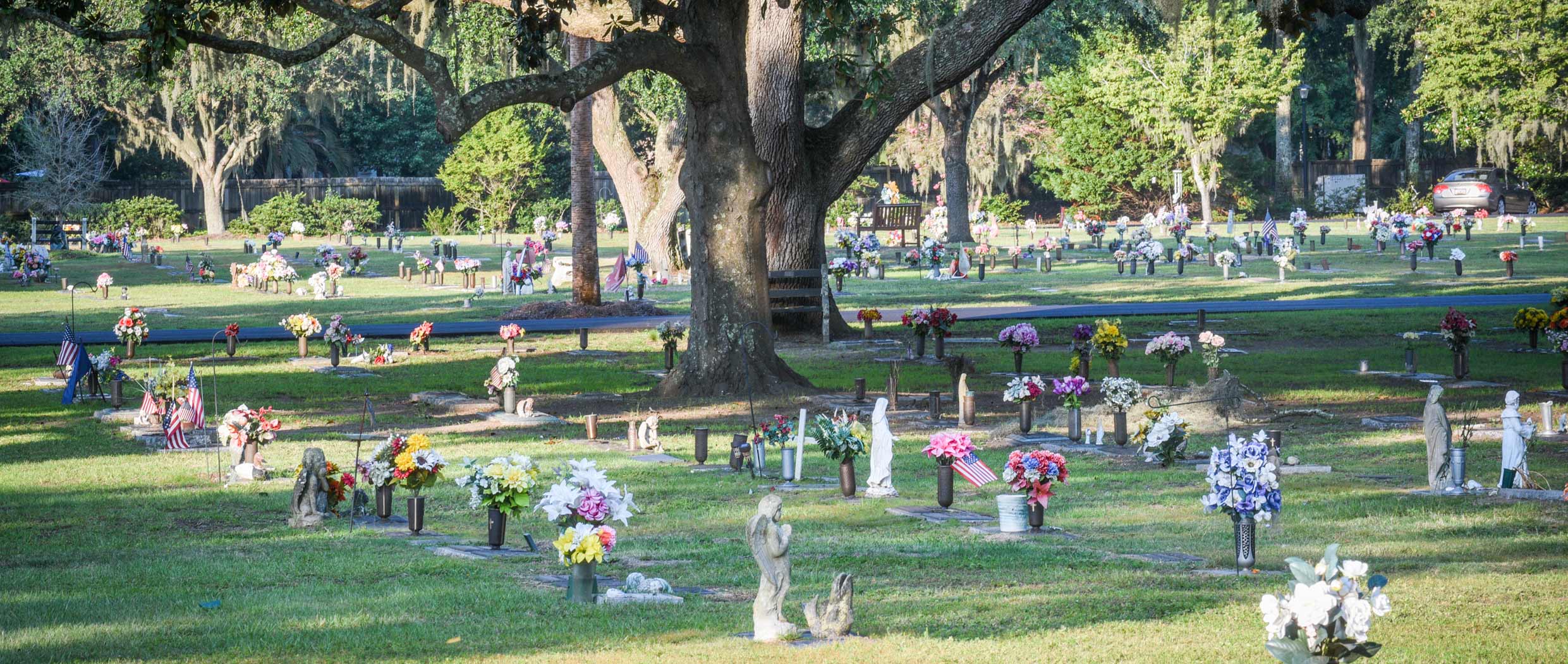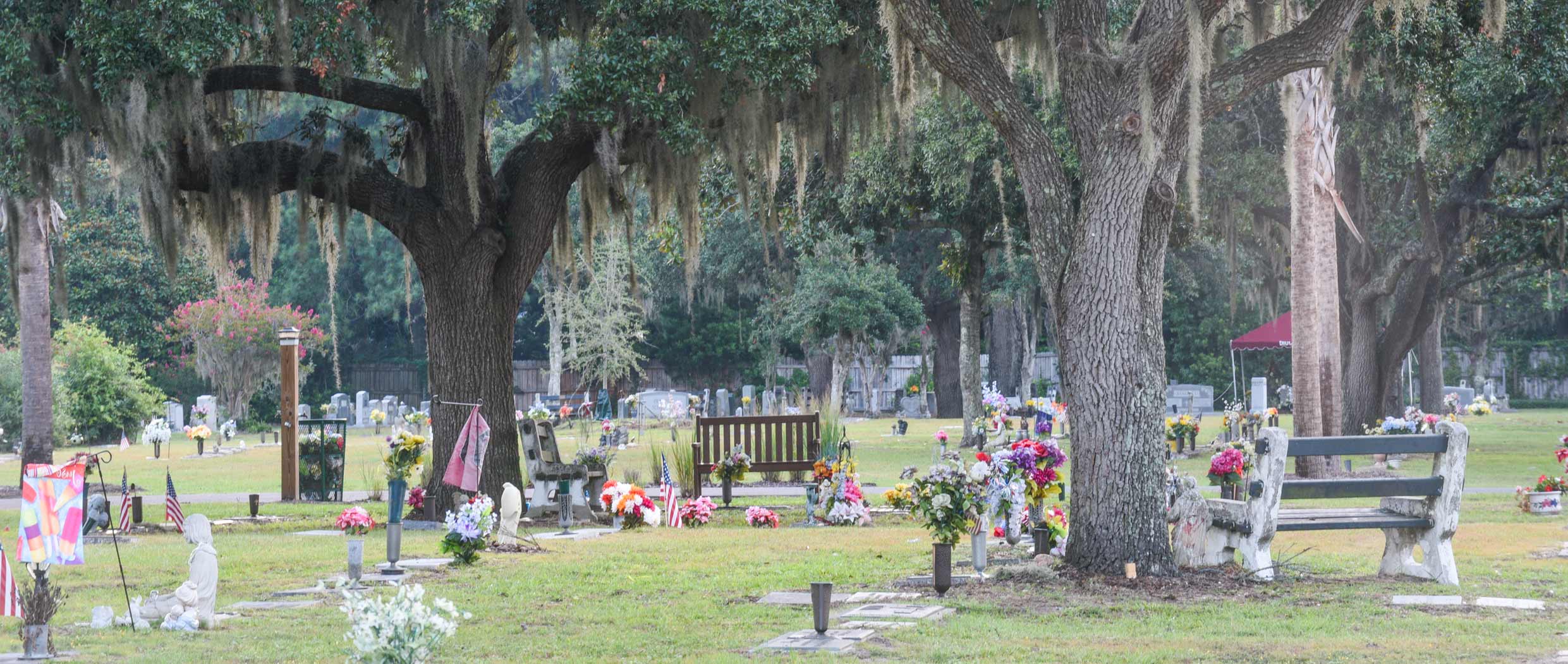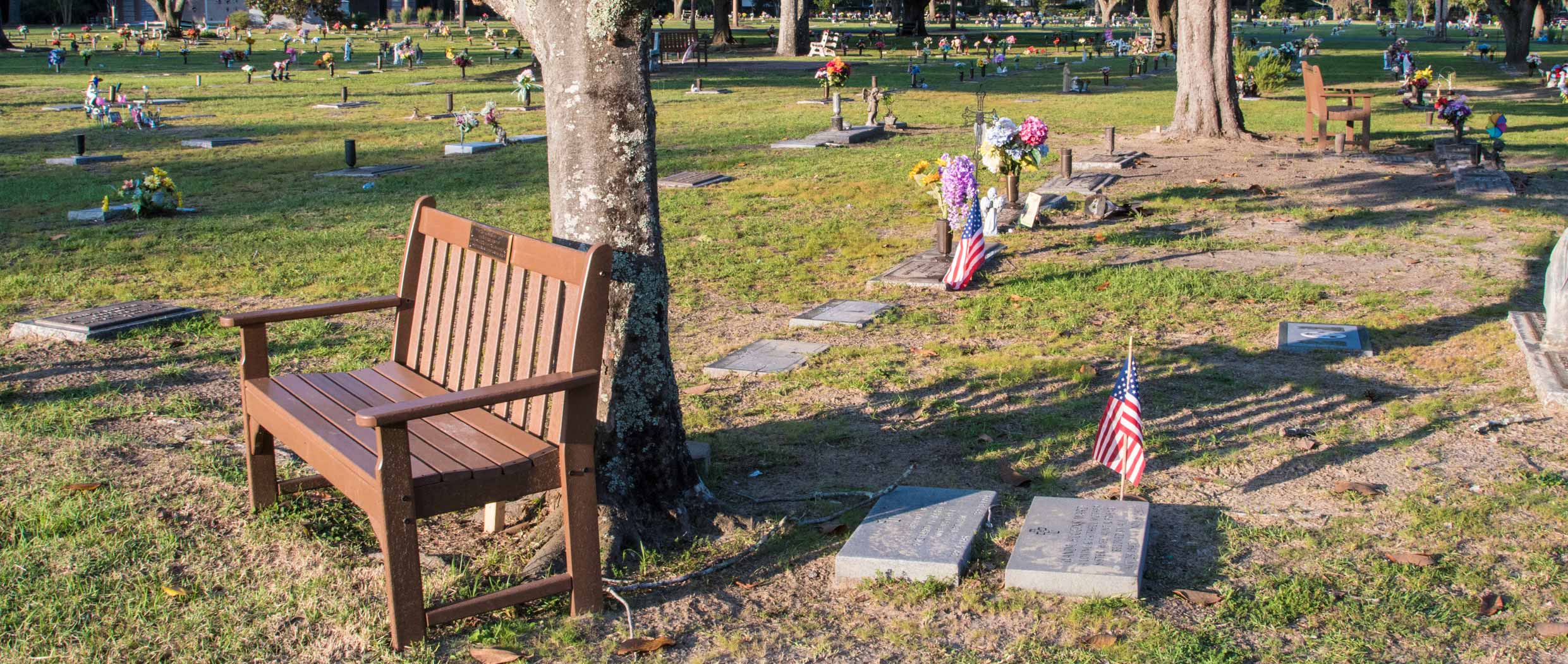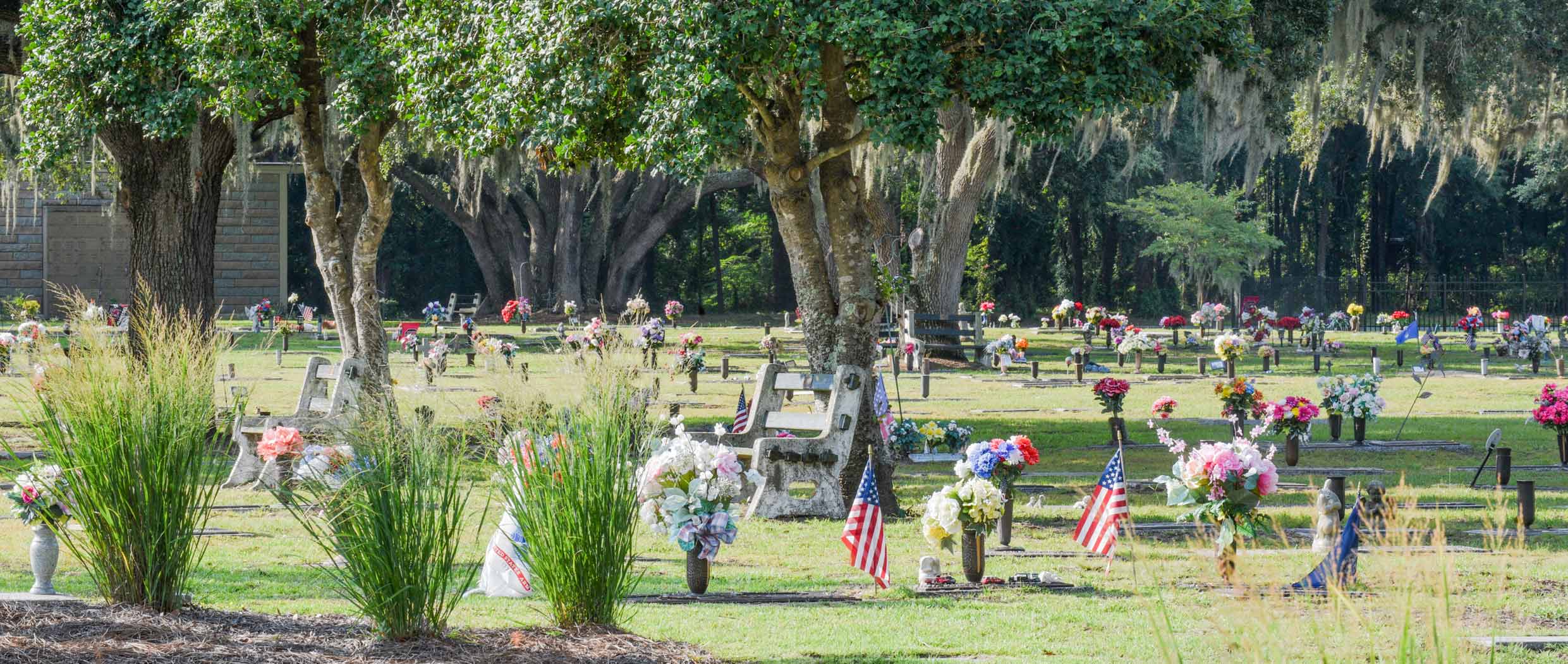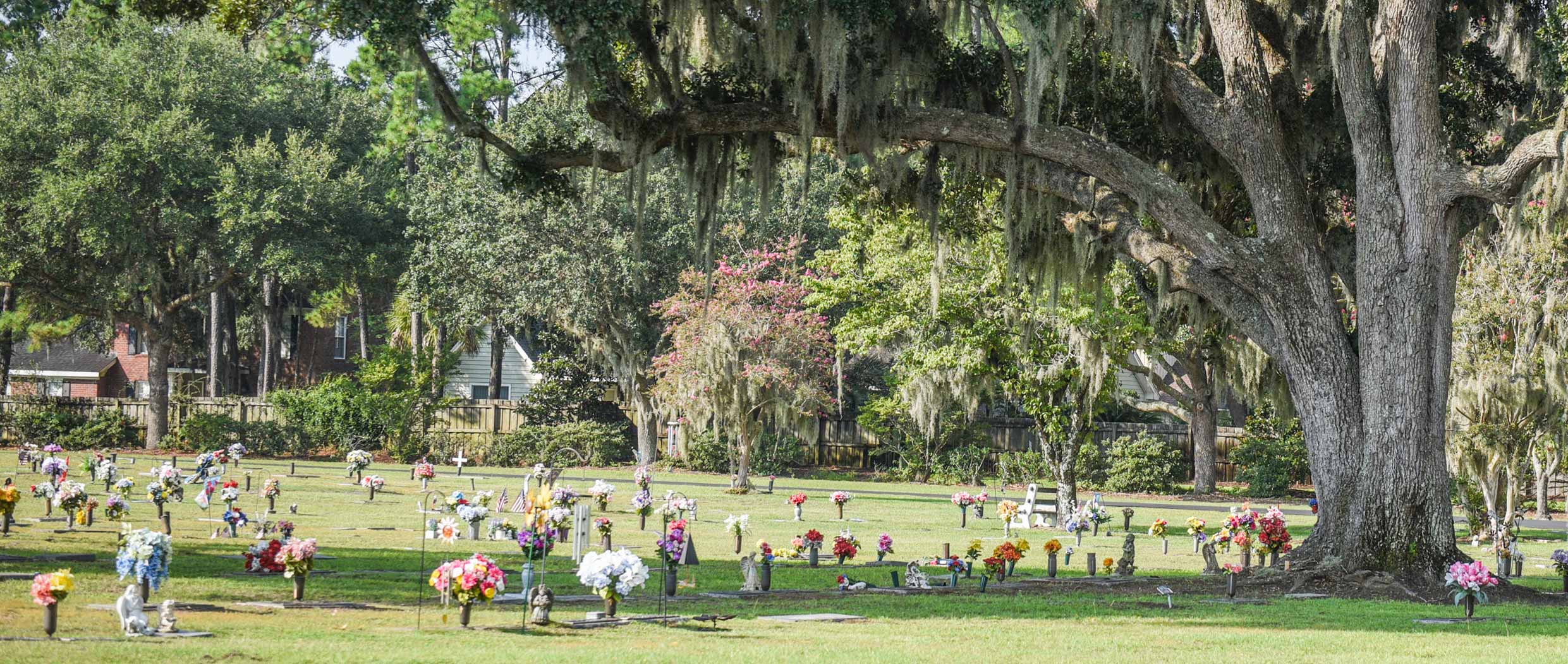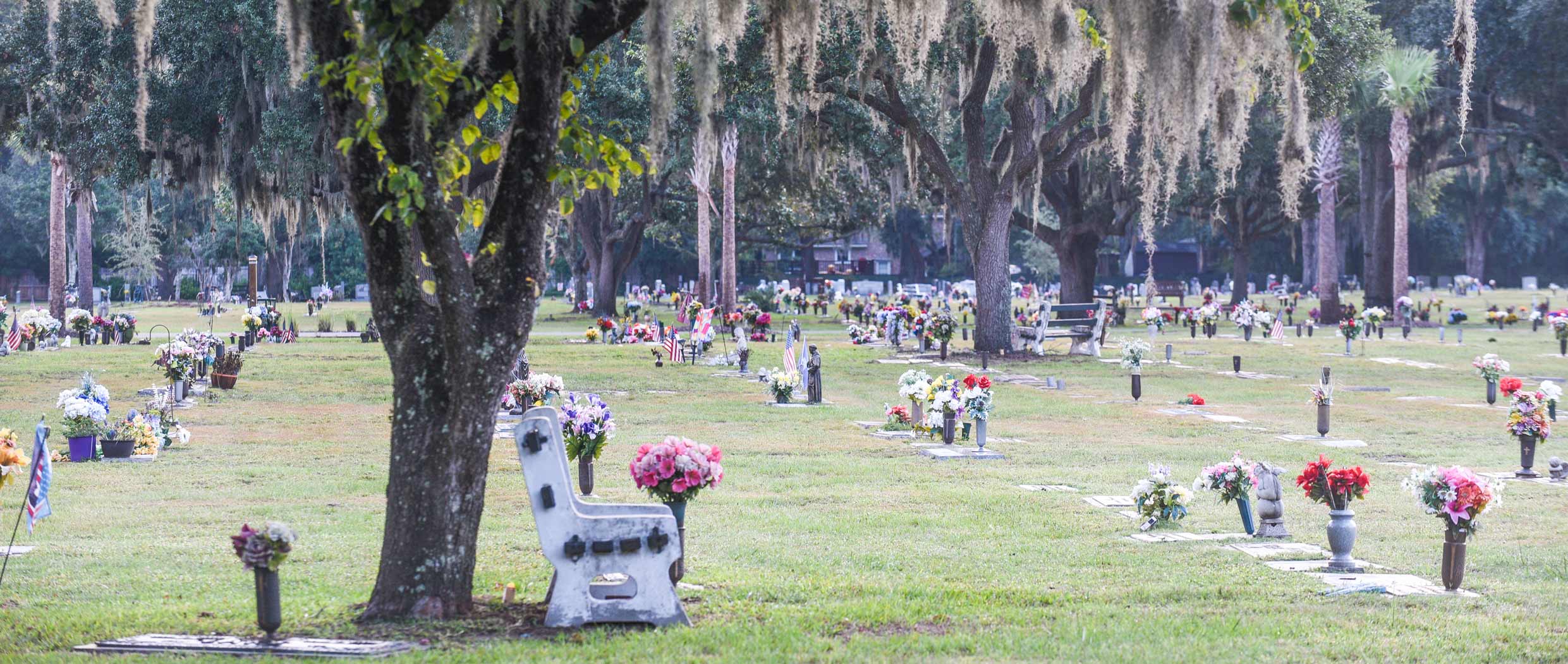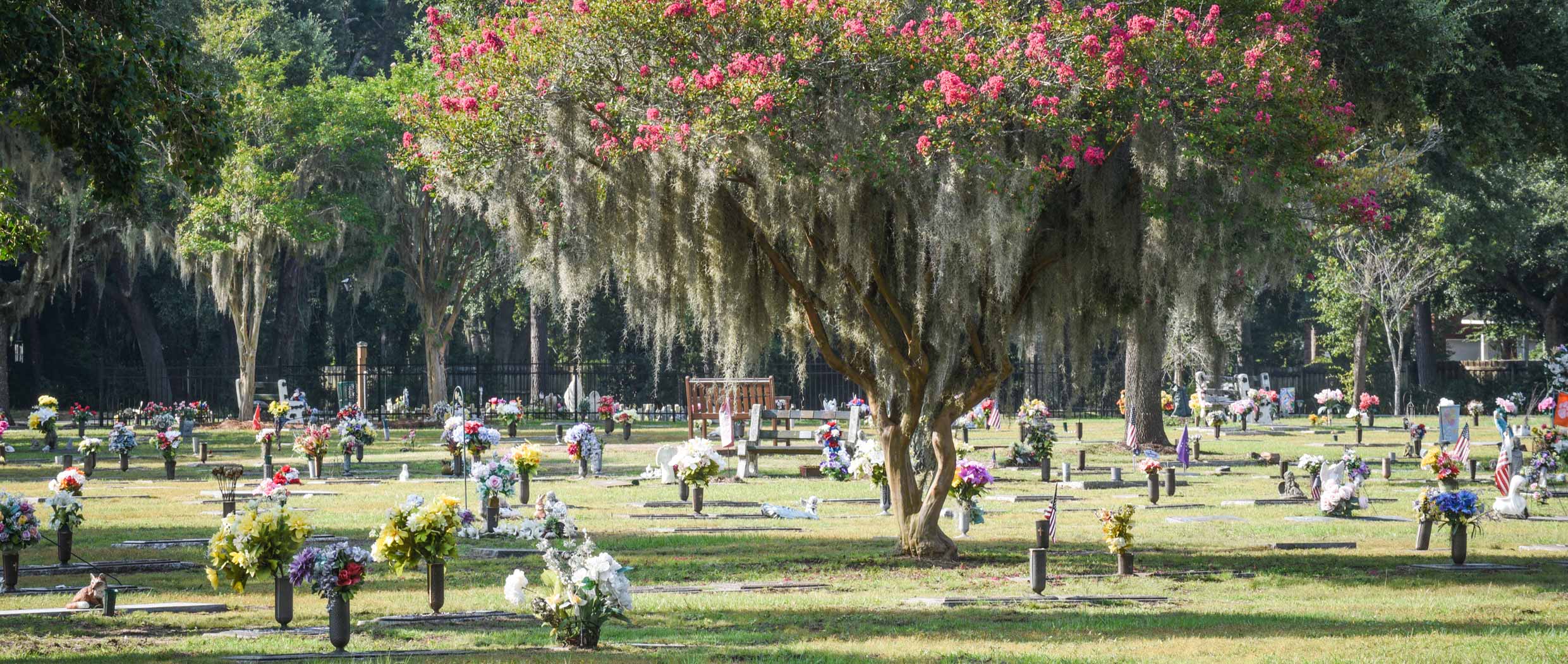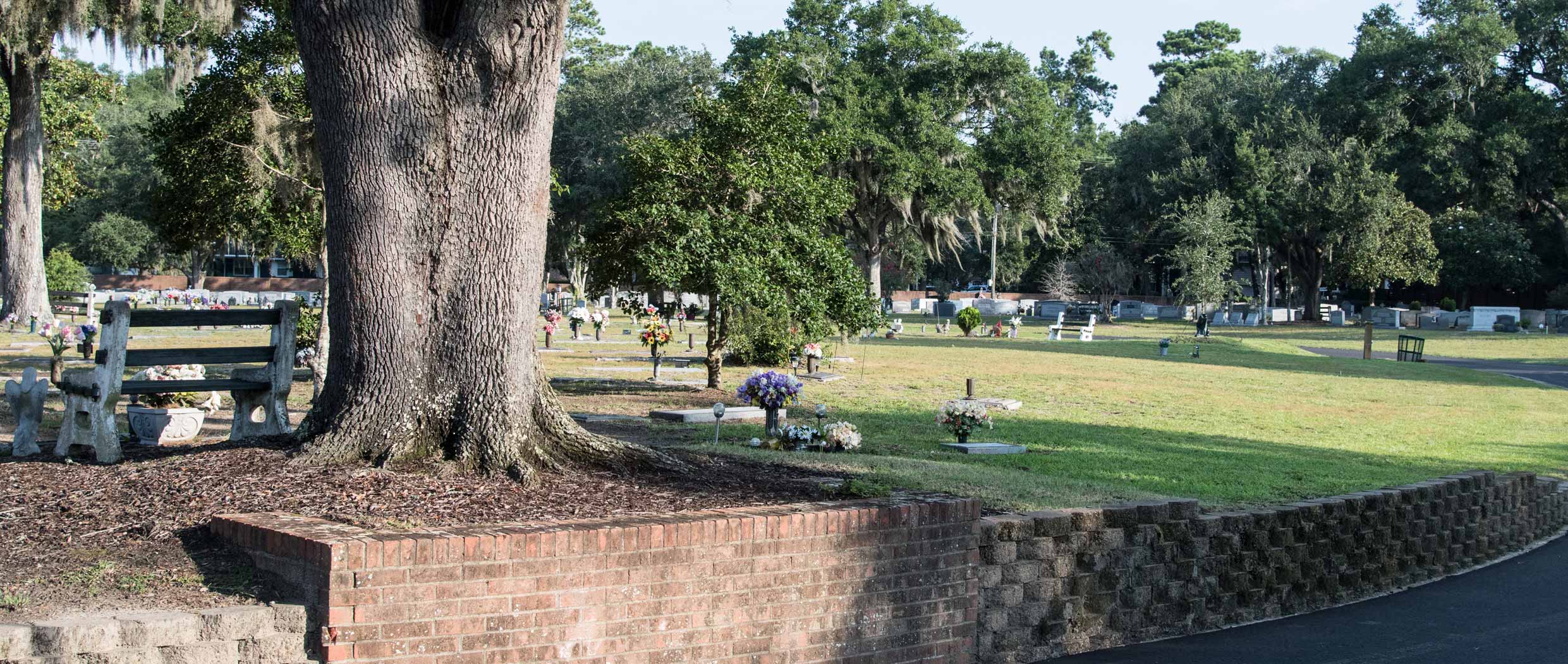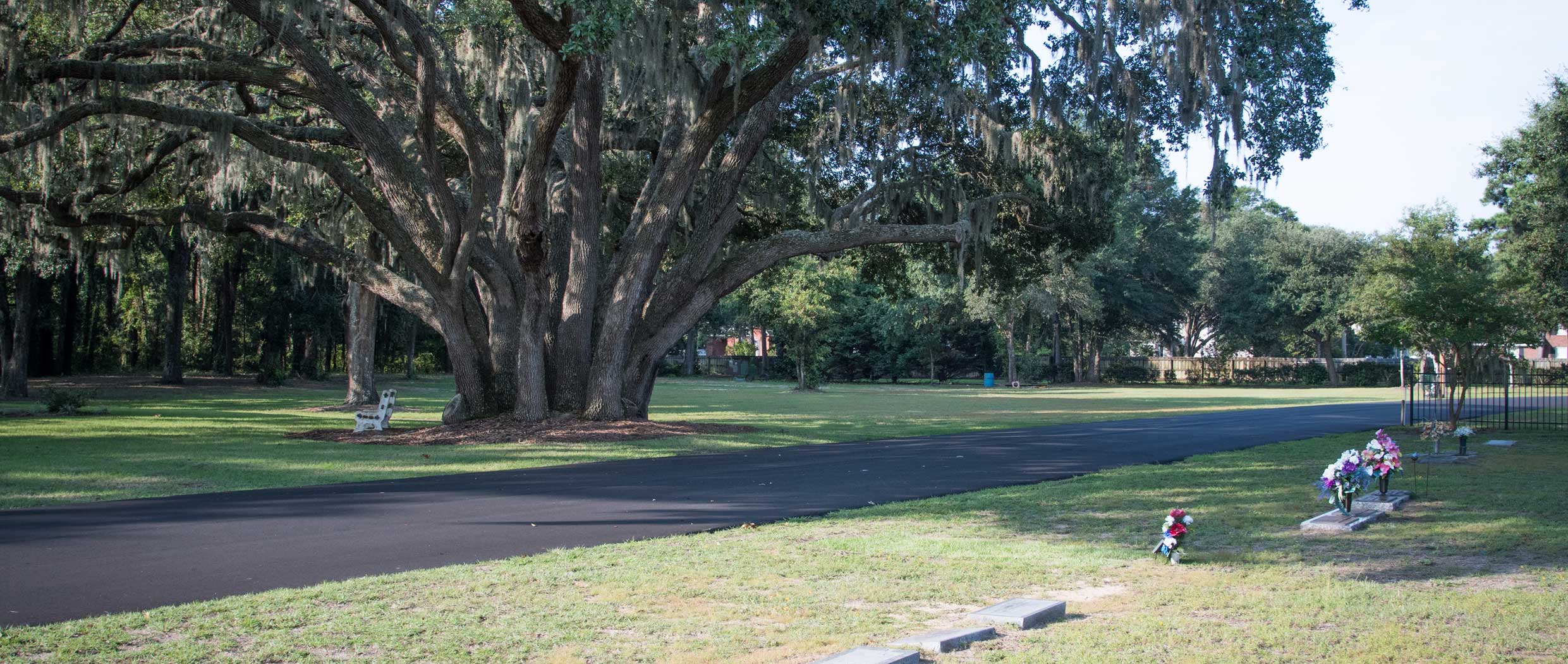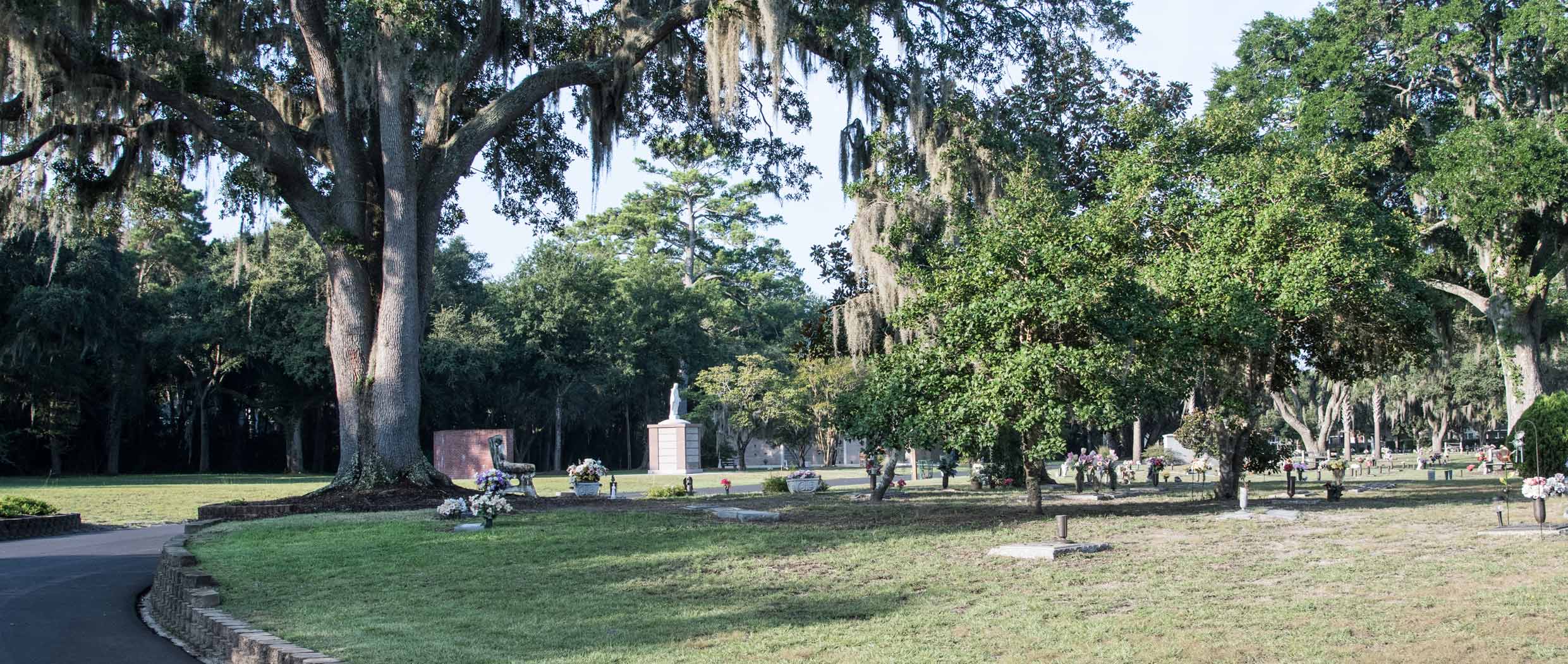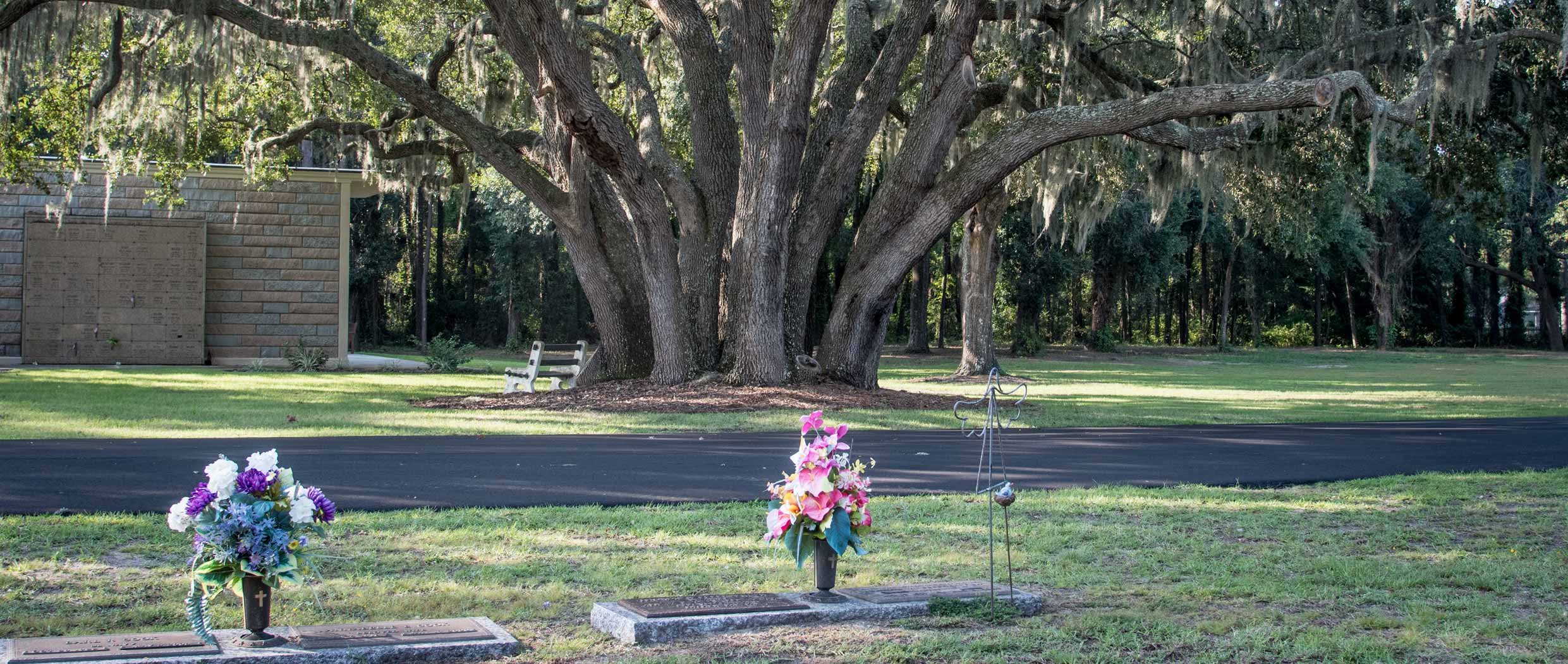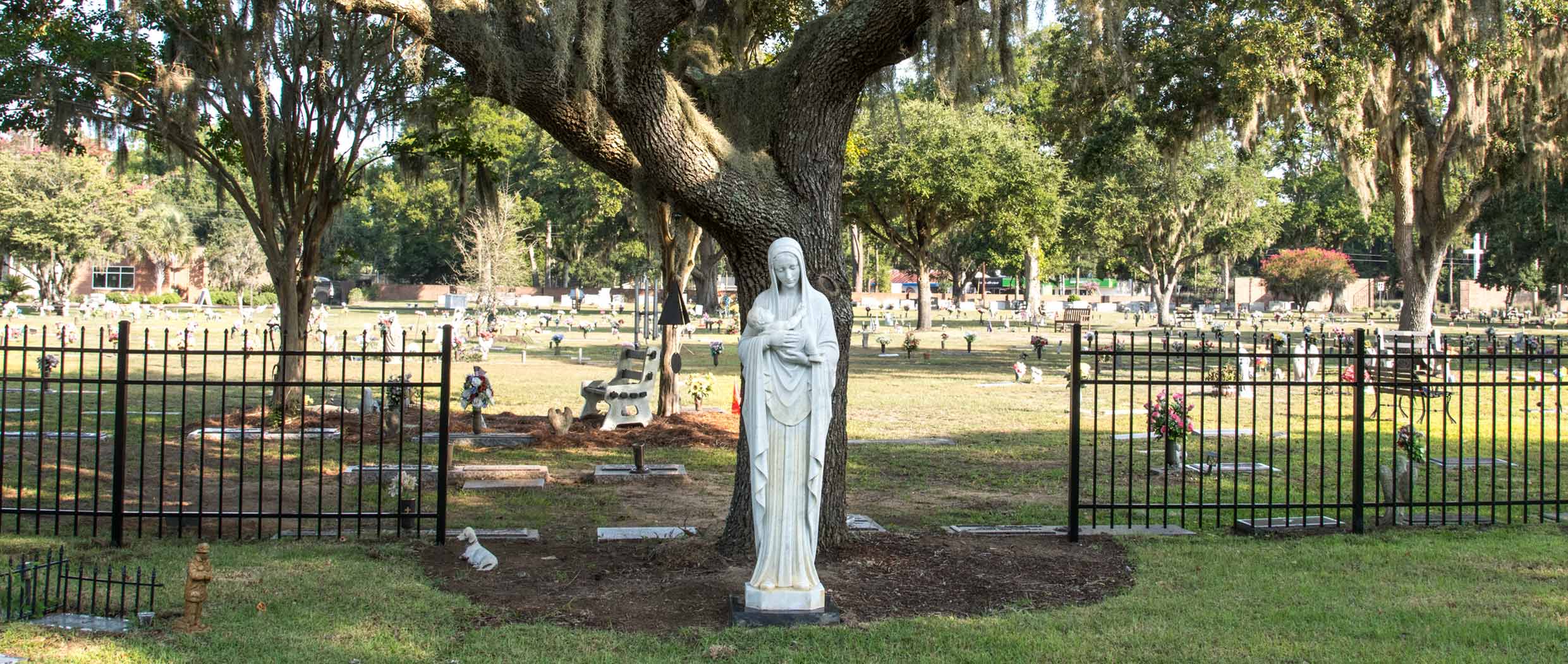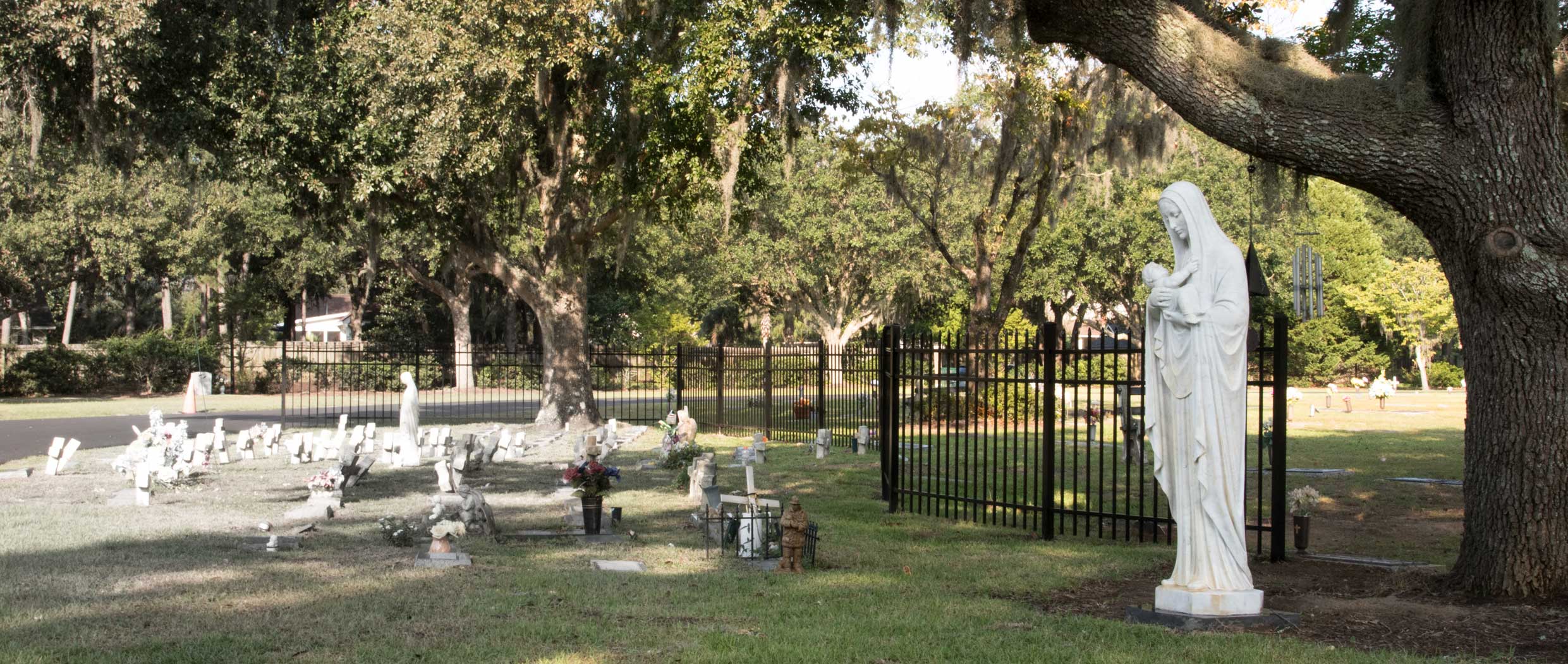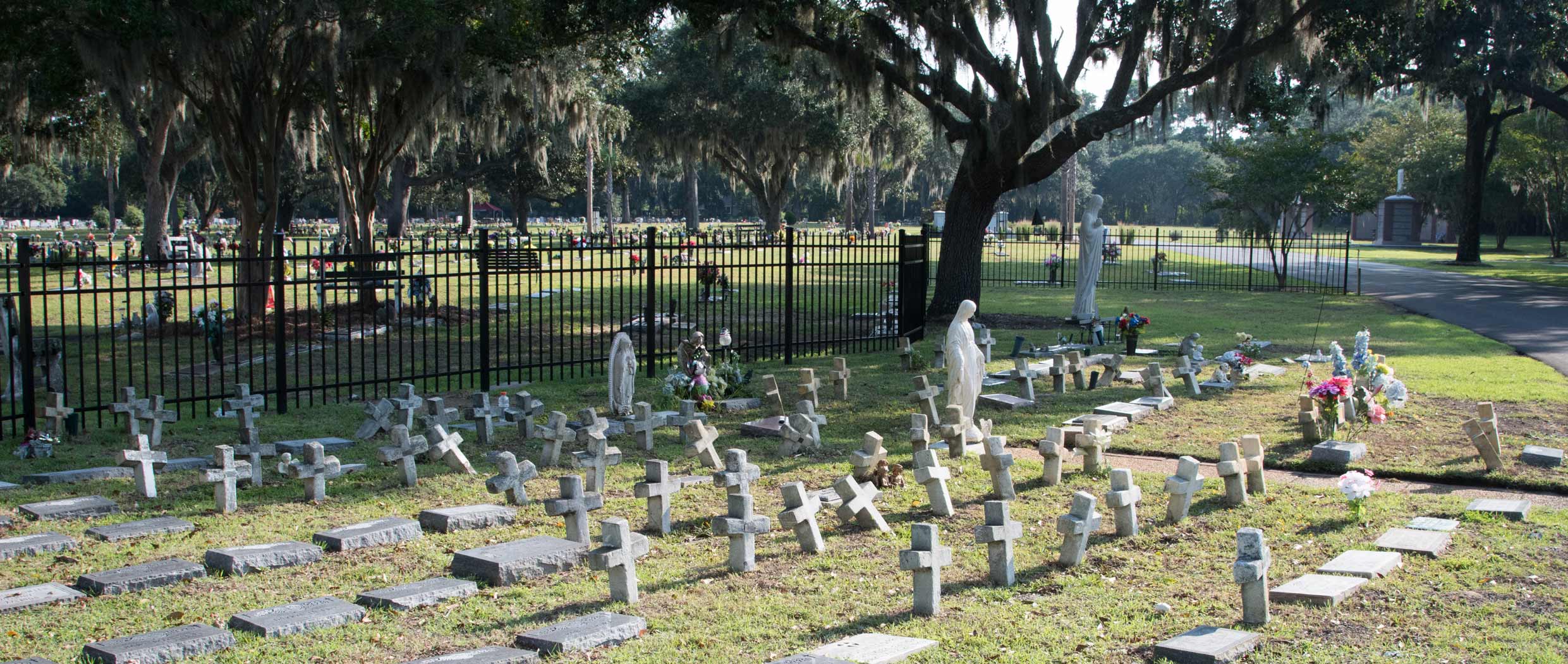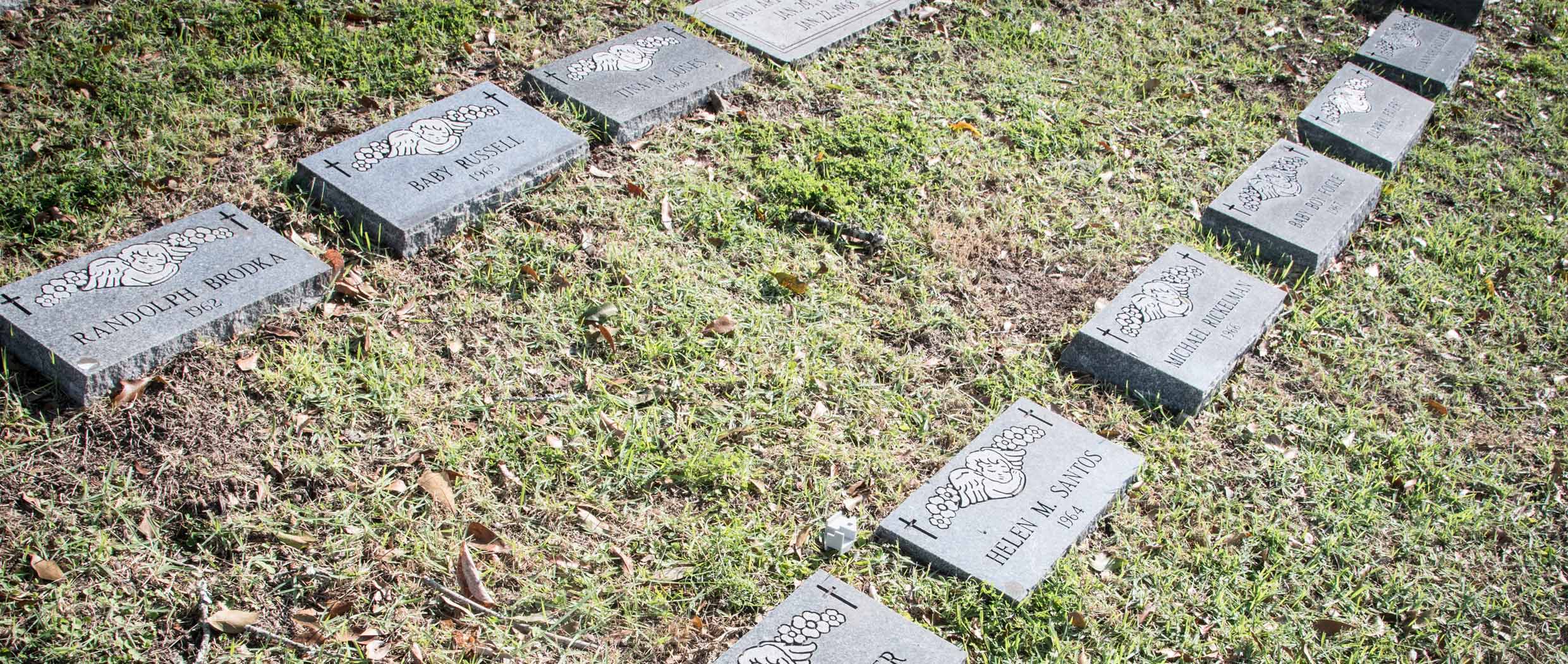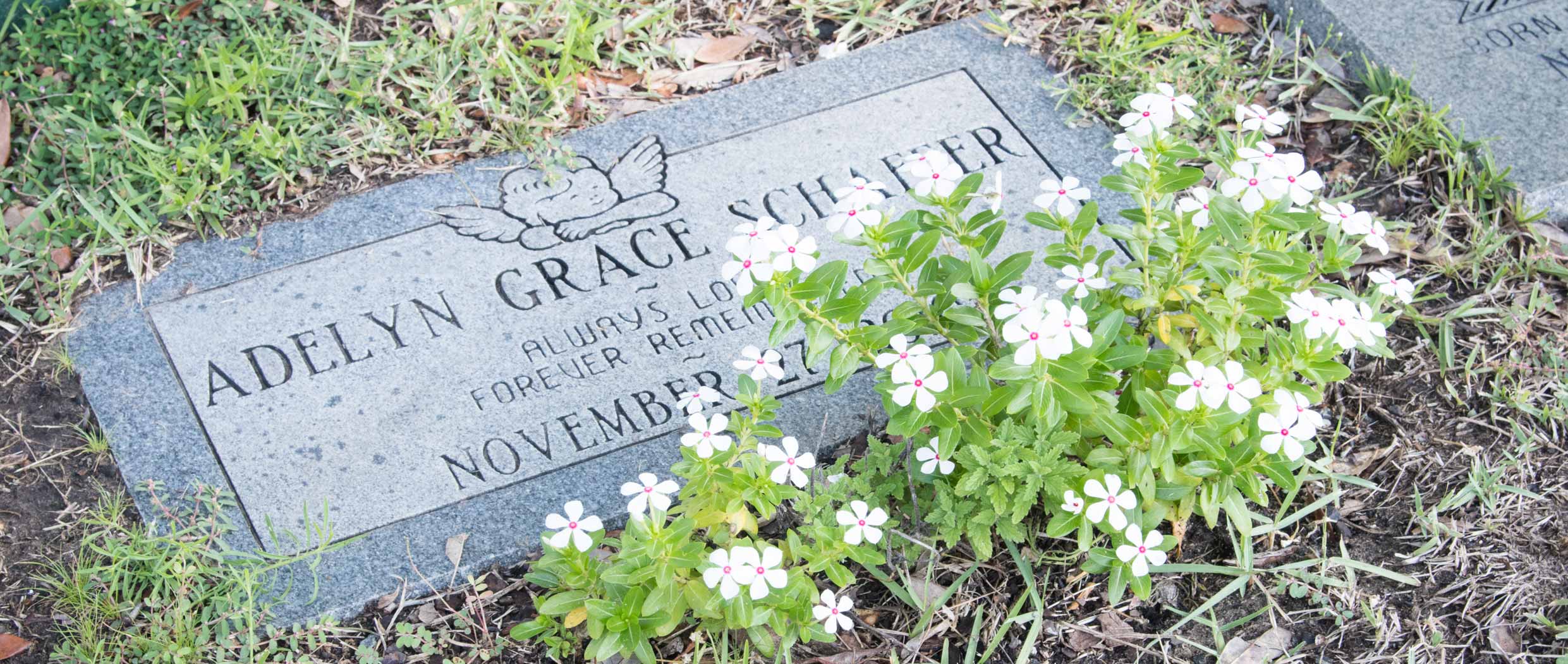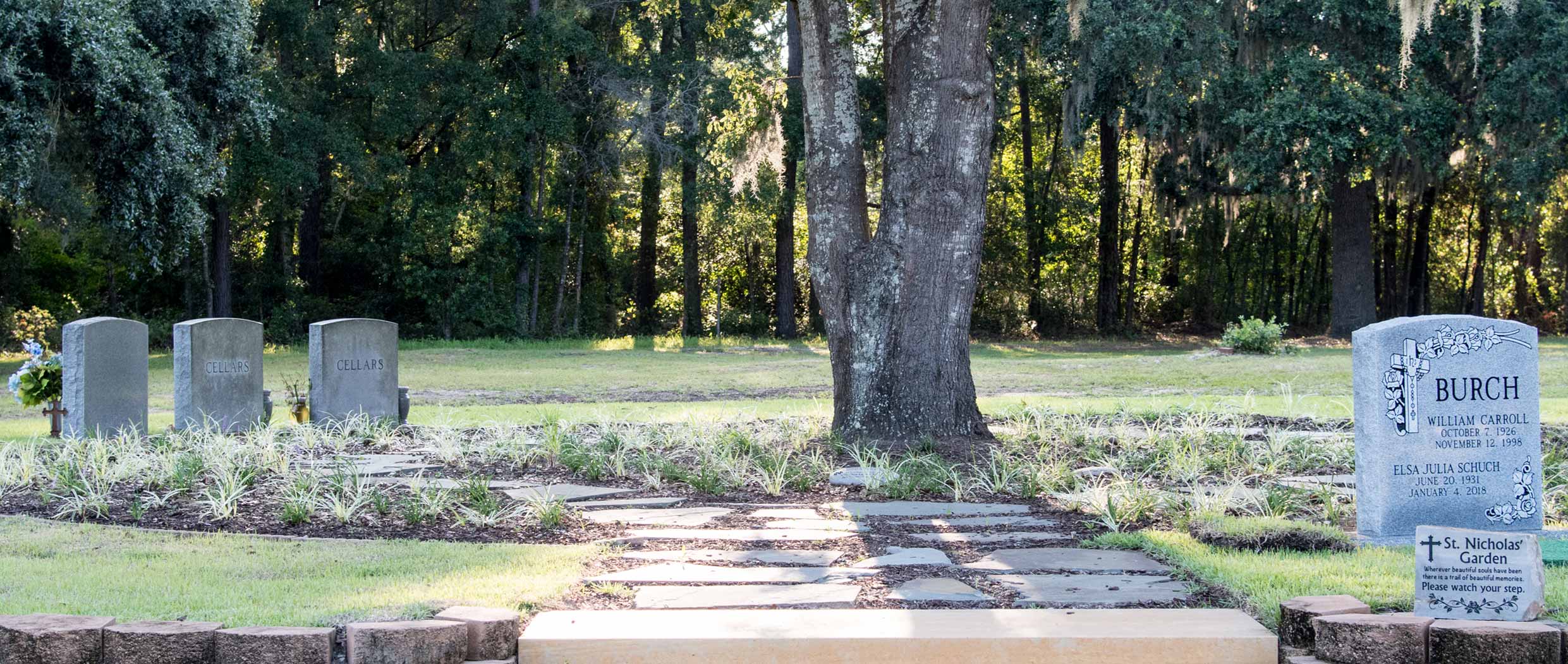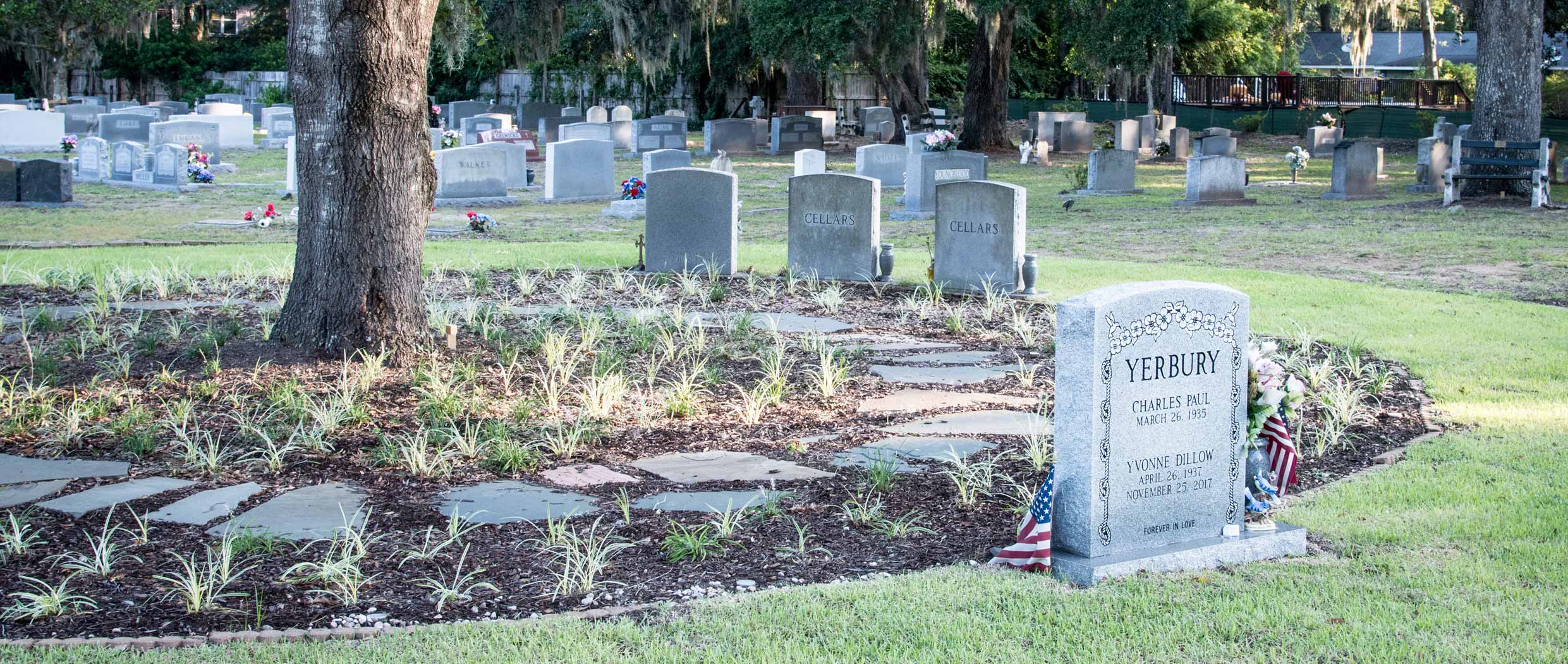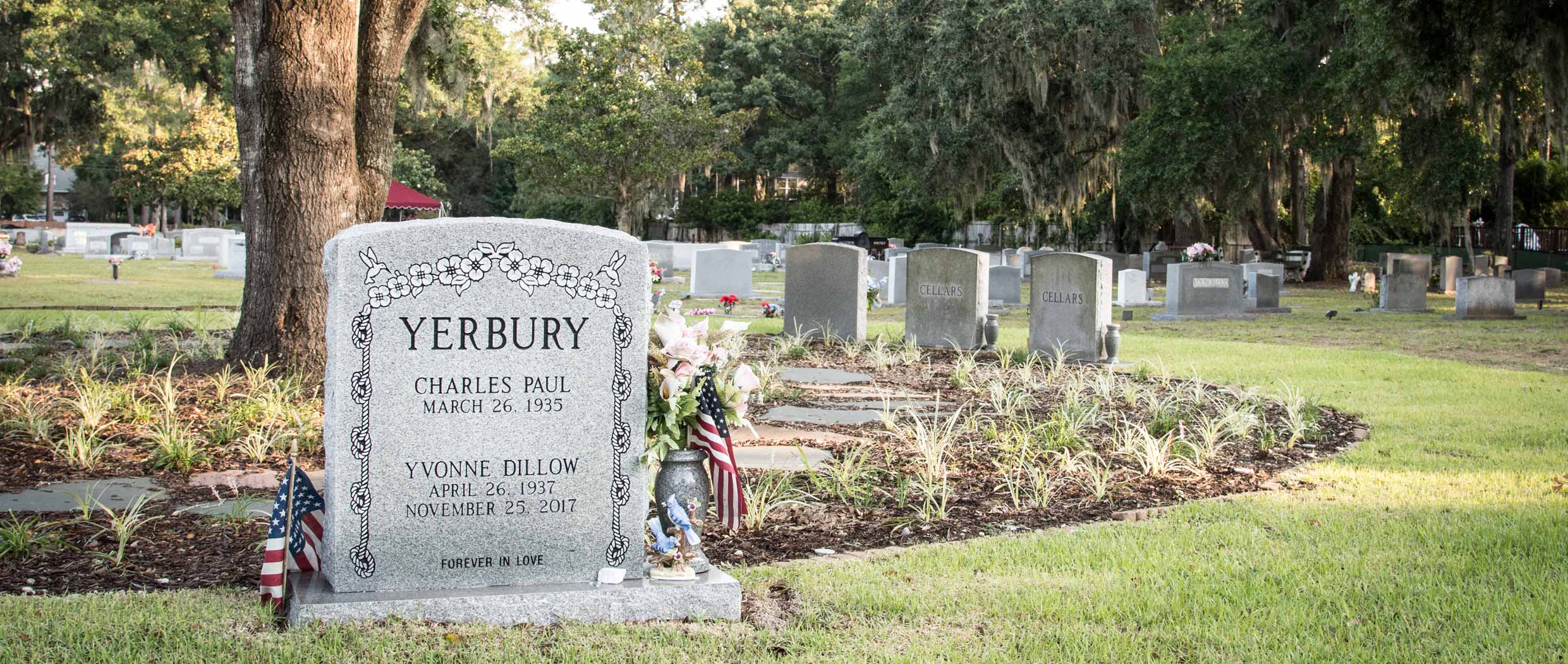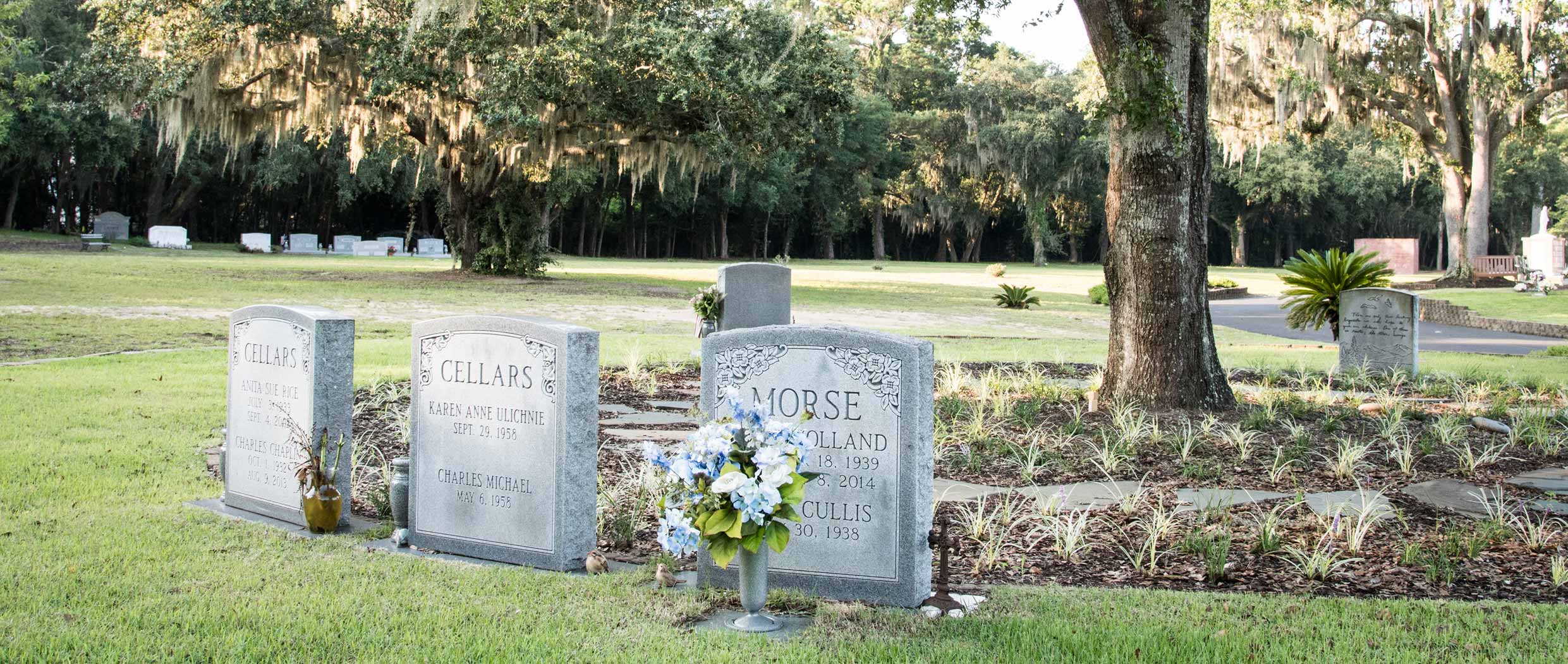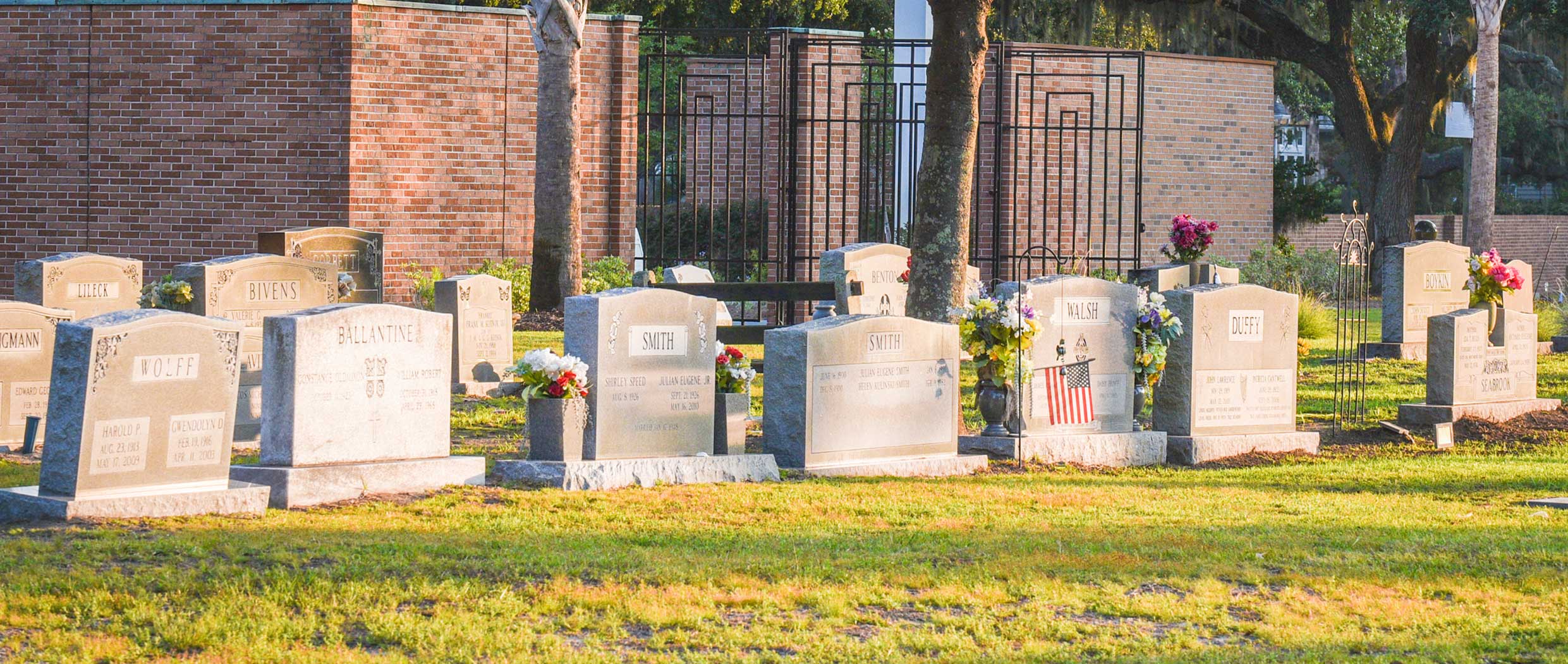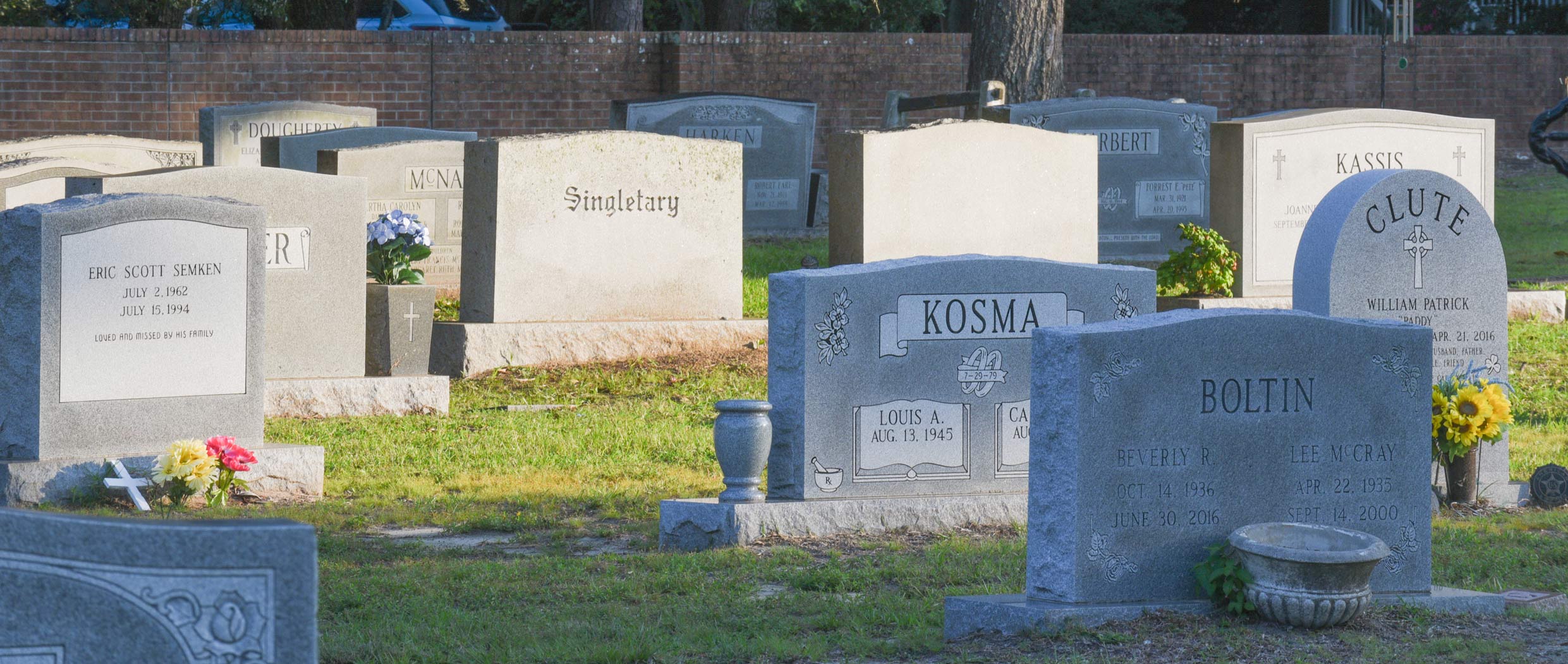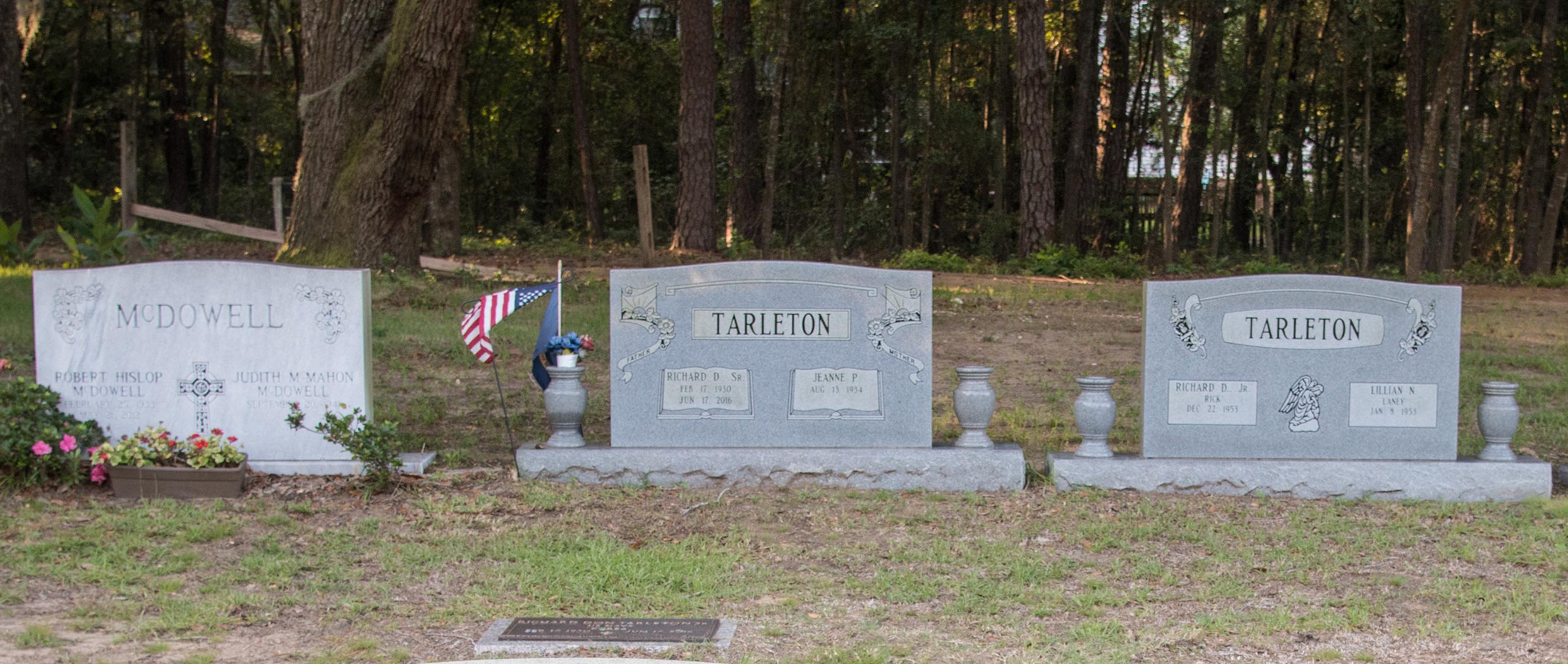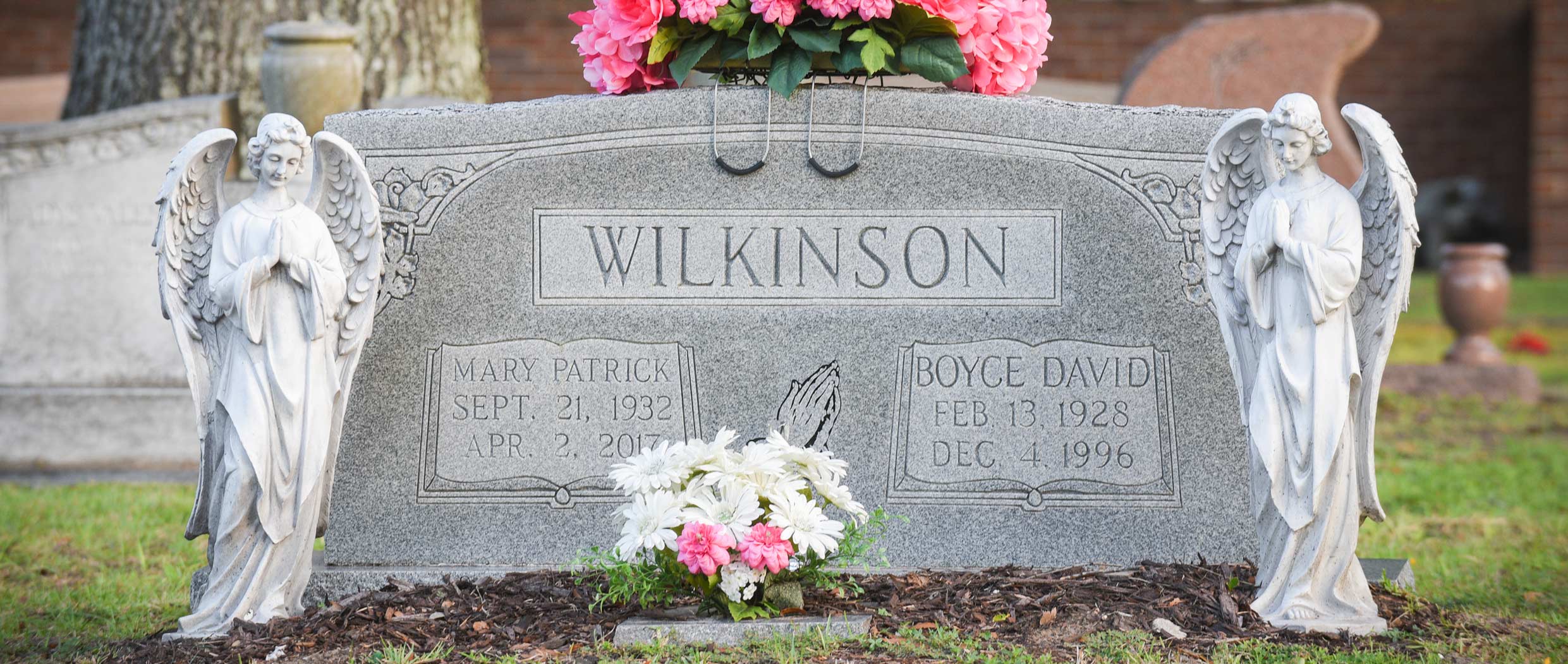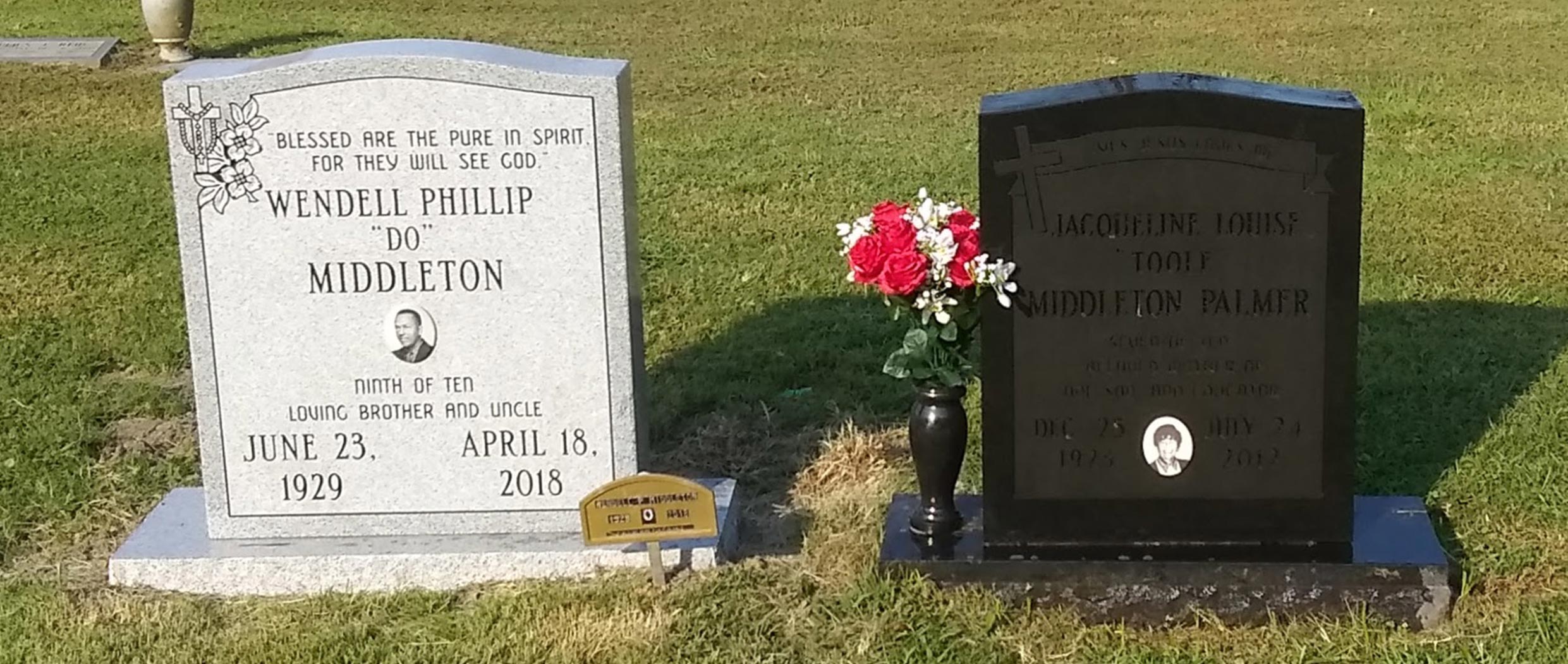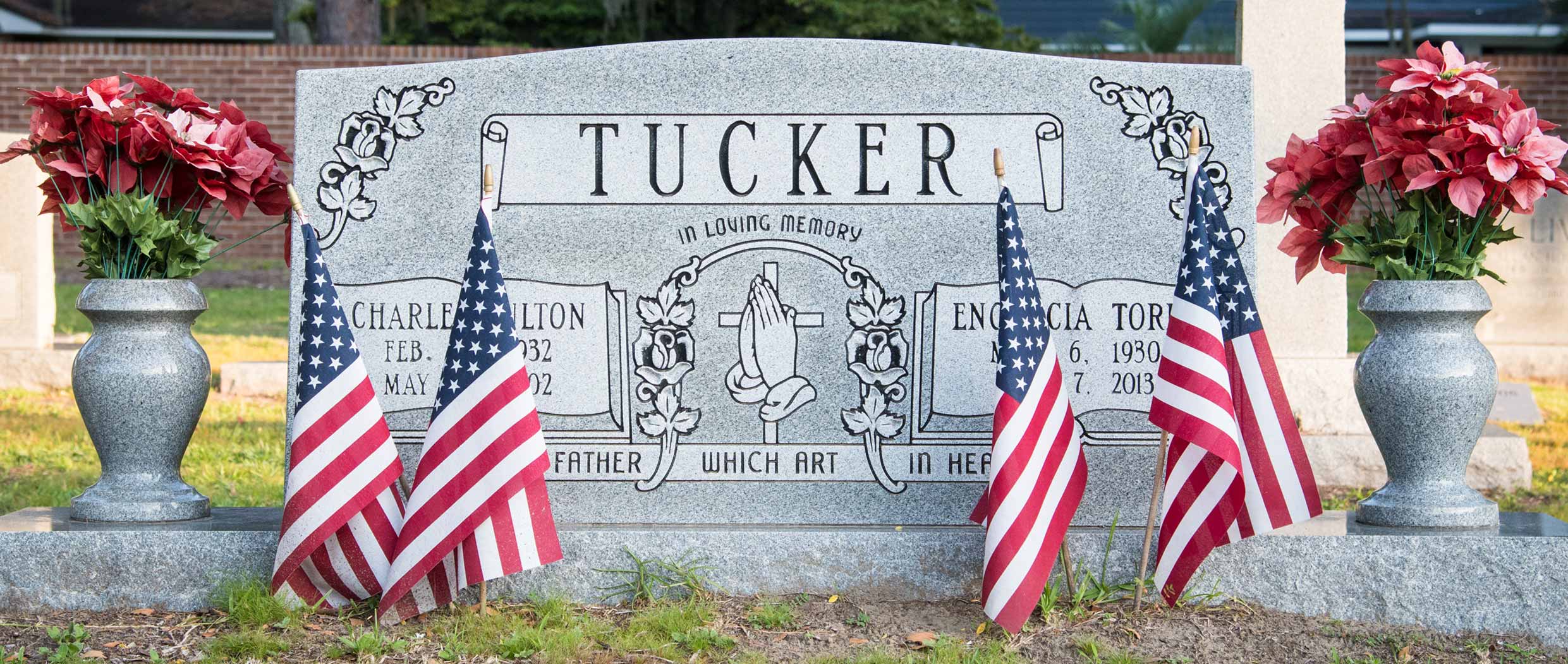Holy Cross Cemetery
604 Ft. Johnson Road,
Charleston, SC 29412
(843) 795-2111
Office Hours: 7 am – 3 pm M-F
Gates Always Open
Holy Cross Cemetery opened on James Island in 1961, when the need for additional burial space became a must as the original Catholic cemetery in Charleston, St. Lawrence Cemetery (downtown), edged toward capacity. Holy Cross Cemetery is comprised of nearly 20 beautiful acres peppered with Live Oak, Water Oak, Magnolia and Palm trees. Holy Cross offers traditional in-ground and above ground casket burial, columbariums for the inurnment of the cremated remains of the body and in-ground cremation burial in several peaceful gardens.
Our Holy Cross Cemetery offers unique cremation only burial options in the St. Nicholas Cremation Garden. This cremation garden is located under a lovely tree, in a raised garden bed with both grass areas and a large central flower garden. A dedicated irrigation system ensures the continuous beauty of this garden.
Several types of cremation burial are available in the St. Nicholas Cremation Garden:
- In-ground burial of husband and wife with a shared upright monument
- In-ground burial of an individual amongst flowers and marked with a simple river rock marker.
- Above-ground burial of an individual in a unique granite vessel that both memorials the individual and safely houses their cremated remains inside the monument.
Learn more about pricing and options for in-ground (PDF) and above ground (PDF) at our cemetery. Or you can download the Catholic Cemeteries in SC, a full-color brochure about our cemetery.
History
The Diocese of Charleston was eager to open a new cemetery for the Catholic faithful of James Island as early as the 1920s. Finally in 1958, the diocese acquired 80 acres of land on James Island. Two years later, Bishop Hallinan consecrated the property for rite of burial on 4 December 1960 and assigned Father Joseph Bernardin director of diocesan cemeteries. Bp. Hallinan chose the name “Holy Cross” because it “recalls the redemption of mankind by our Lord’s death.” The design and layout for Holy Cross was “modern,” with one section intended to accommodate sunken memorial stones for a flush, clean, minimalist aesthetic and a second section for above ground memorial stones for a more “traditional” aesthetic.


